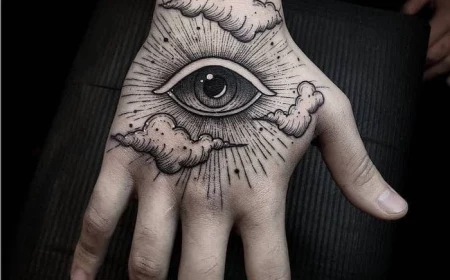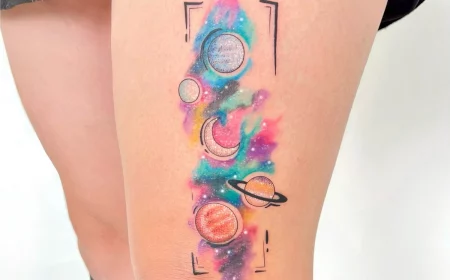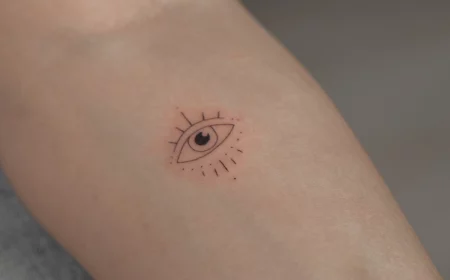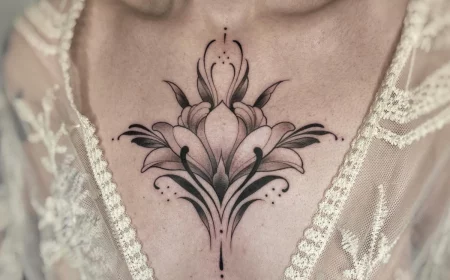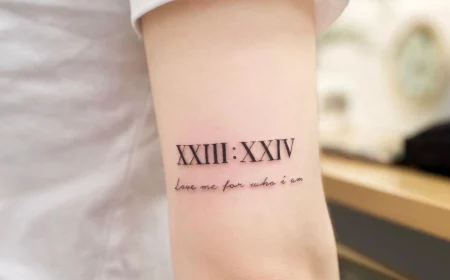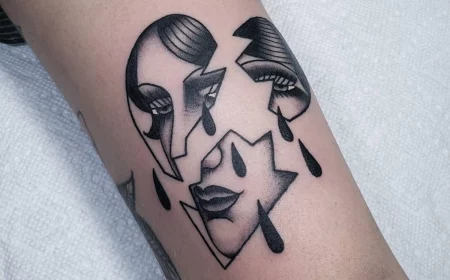Thinking About a Floral Tattoo? Here’s What You Actually Need to Know
If you’re thinking about getting a flower tattoo, you’re in good company. Honestly, in all my years in the tattoo chair, I’ve probably inked more flowers than anything else. We’re talking everything from bold roses and huge peonies to tiny, delicate sprigs of lavender. People come in with photos, sketches, or sometimes just a vibe, and it’s my job to turn that into art that fits their body and their story.
In this article
- First Things First: How a Tattoo Actually Stays on Your Skin
- The Artist’s Toolkit: How We Bring Flowers to Life
- What Your Flower Says: Style, Symbolism, and You
- The Real-World Journey: From Idea to Healed Art
- Beyond the Basics: Big Projects and Cover-Ups
- The Boring but Crucial Stuff: Safety & The Long Haul
- Inspiration Gallery
And let’s be real, a flower tattoo is so much more than just a pretty picture. It’s one of the most classic and versatile subjects you can get. Why? Because flowers just work. They’re organic. They can flow with the curve of a muscle, wrap beautifully around an arm, and be sized up or down for anything from a tiny hidden symbol to a full back piece. This is the guide I wish I could give every client—we’re going beyond the basic meanings to talk about how it all works, from the ink to the techniques that make a flower feel alive on your skin.
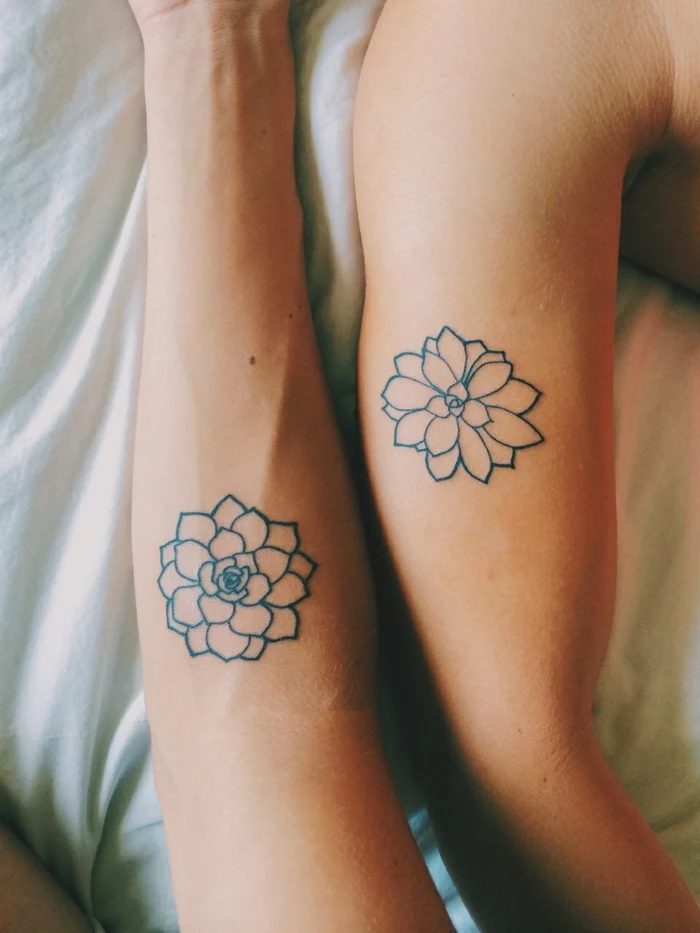
First Things First: How a Tattoo Actually Stays on Your Skin
Before we even get to the fun part of picking a design, it really helps to know what a tattoo is. It’s not just ink sitting on top of your skin; it’s a tiny bit of science, and understanding it will help you see why finding a skilled artist and taking care of the final piece is so important.
Your skin has a few layers, but for tattoos, we only care about the top two. The very top layer, the epidermis, is the part you see. The problem is, it’s constantly shedding and replacing itself. If we put the ink there, your tattoo would literally flake away in a few weeks.
So, we have to go a little deeper, to the layer right underneath called the dermis. This layer is much more stable. When a tattoo needle buzzes away, it’s depositing tiny drops of ink into the dermis. Your body’s immune system immediately freaks out a little bit—as it should!—and sends little cleanup cells called macrophages to deal with these foreign ink particles. But here’s the cool part: the ink particles are too big for the macrophages to break down and get rid of. So they just kind of… get stuck there, suspended in the dermis. You see the art right through your translucent top layer of skin. And that, my friend, is why tattoos are permanent.
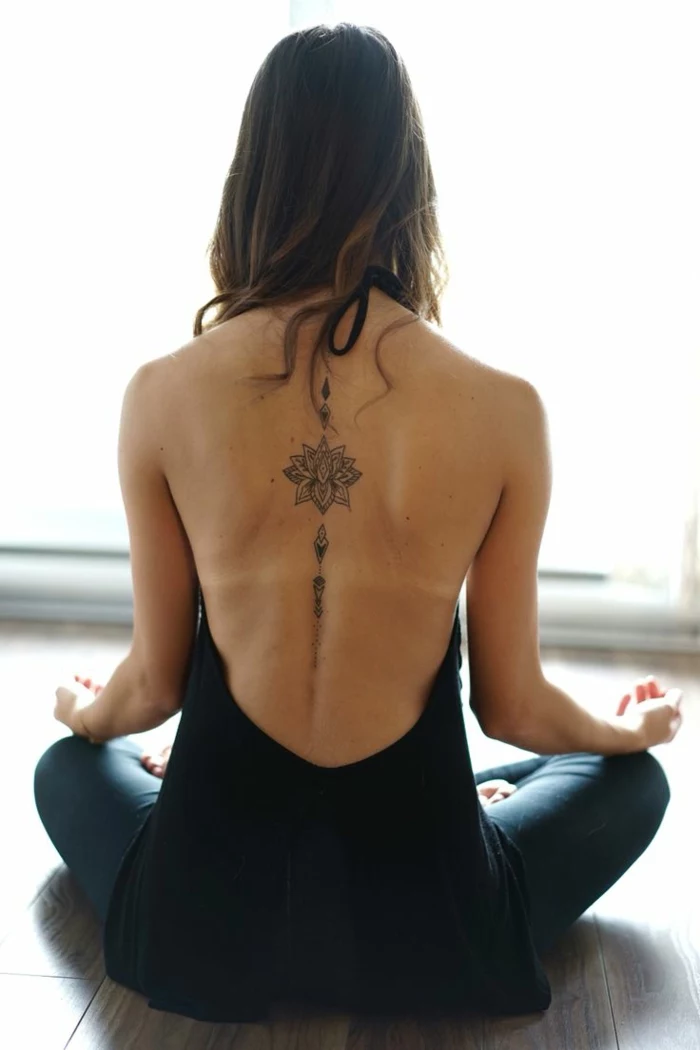
What’s Actually in the Ink?
This is a question I get all the time, and it’s a great one. Tattoo inks have come a long, long way from the old days of using simple soot and whatever liquid was on hand. Today, reputable ink manufacturers produce incredibly stable, sterile, and safe pigments designed specifically for body art. A lot of top-shelf inks are even vegan-friendly now, containing no animal byproducts.
Most modern inks are made from mineral or organic pigments mixed into a carrier solution, like purified water or glycerin. Black ink, for example, is almost always carbon-based. The colors come from a whole range of different compounds. A pro will only use inks from trusted suppliers who do rigorous testing to ensure their products are sterile and consistent.
Quick tip: If you have super sensitive skin or are worried about a reaction, especially to certain red pigments which historically caused more issues, you can always ask the artist for a small patch test. We can place a few tiny dots of ink in a hidden spot a few weeks before your main session. It’s a simple step that offers a lot of peace of mind.

The Artist’s Toolkit: How We Bring Flowers to Life
Making a flower look soft and real on skin is a technical skill that takes thousands of hours to master. It’s a delicate dance between the speed of my hand, the tuning of my machine, and the needles I choose. Different techniques create wildly different flowers.
The Foundation: Solid Line Work
Every tattoo begins with its skeleton: the line work. Shaky or inconsistent lines can ruin a piece before it even gets started. For flowers, the type of line really sets the mood.
- For Bold, Traditional Looks: To get that classic, powerful American Traditional rose, we use a larger needle grouping (like a 9 or 11 Round Liner). The machine runs a bit harder to pack in a thick, saturated black line.
- For Delicate, Fine-Line Styles: If you’re after a dainty botanical illustration, we switch to a much smaller needle, sometimes even a single needle. This takes a super light touch and a quick hand to create a crisp line that looks like it was drawn with a fine-tipped pen.
You can literally feel and hear when linework is going in well. There’s a steady, consistent buzz. Too shallow, and the ink will fall out as it heals. Too deep, and the line can “blow out,” making the ink look blurry and smudged under the skin. It’s a constant balancing act.
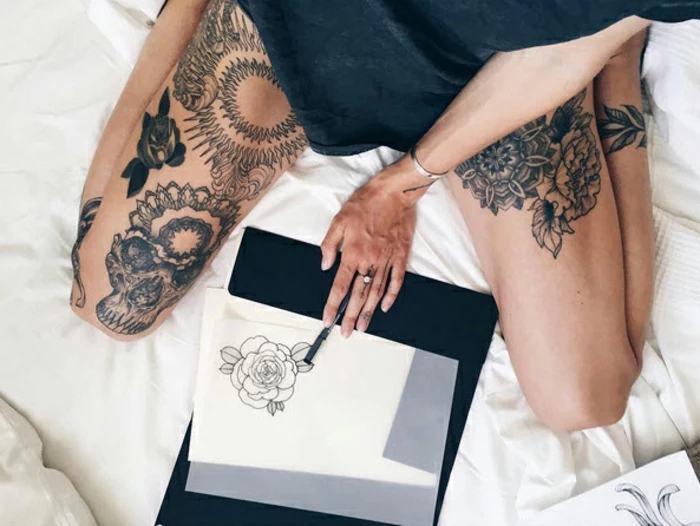
The Soul: Shading and Texture
Shading is what gives a flower its softness and shape. I use a few different techniques, often in the same tattoo, to create depth.
- Whip Shading: This is a quick flicking motion with the hand that creates a soft, peppery texture. It’s perfect for the delicate, almost dusty look of peony petals.
- Stippling (or Dotwork): This is exactly what it sounds like—building an image with thousands of tiny dots. It’s time-consuming, but it creates a beautiful, airy feel, great for the center of a sunflower or a background of baby’s-breath.
- Smooth Black and Grey: For realistic flowers, this is the holy grail. We pack solid black into the darkest shadows, then use a series of “grey washes” (black ink diluted to different tones) to build up seamless, photorealistic gradients.
The Pop: Packing in Color
Getting bright, solid color requires a totally different motion. We use a needle grouping called a magnum (or “mag”) and move in a slow, circular scrubbing motion to completely saturate the skin without chewing it up. If you rush this part, you get patchy color that will need a touch-up later.
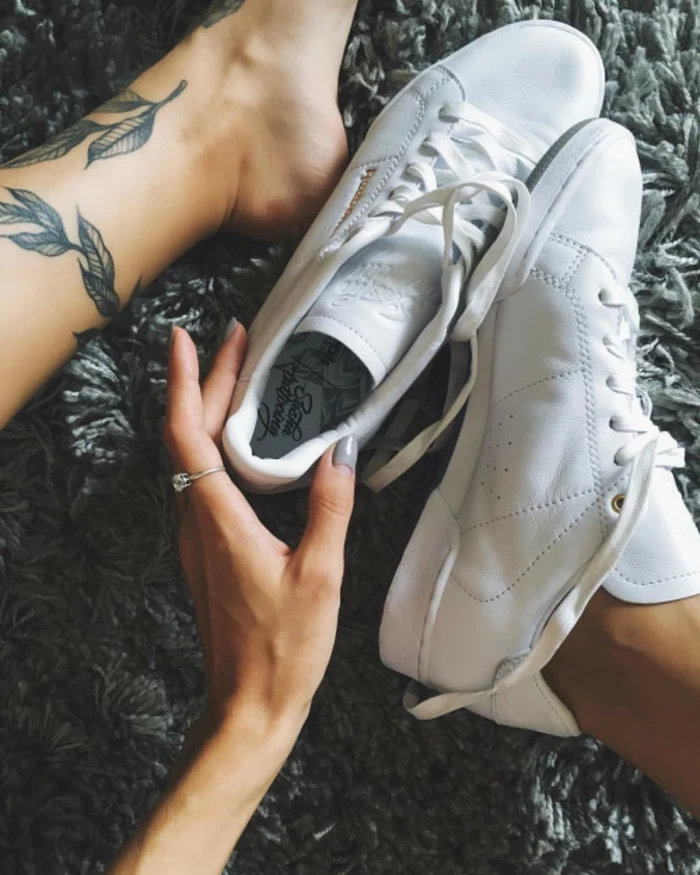
Oh yeah, and color theory is HUGE. A bright yellow that looks amazing on pale skin might look muddy on a darker, warmer skin tone. Part of the consultation is figuring out which shades will heal best and stay vibrant on your specific skin.
What Your Flower Says: Style, Symbolism, and You
While plenty of people pick a flower just because they love how it looks, knowing the backstory can add a whole other layer of meaning. Here are some of the heavy hitters I work with all the time.
The Timeless Rose
This is the undisputed champion of flower tattoos. It’s the classic symbol of love and passion, especially in red. But different colors carry different vibes: yellow often means friendship, while white can signify purity or remembrance. The state of the rose matters, too—a bud can mean new beginnings, while thorns represent that love and beauty often come with a little pain and sacrifice.
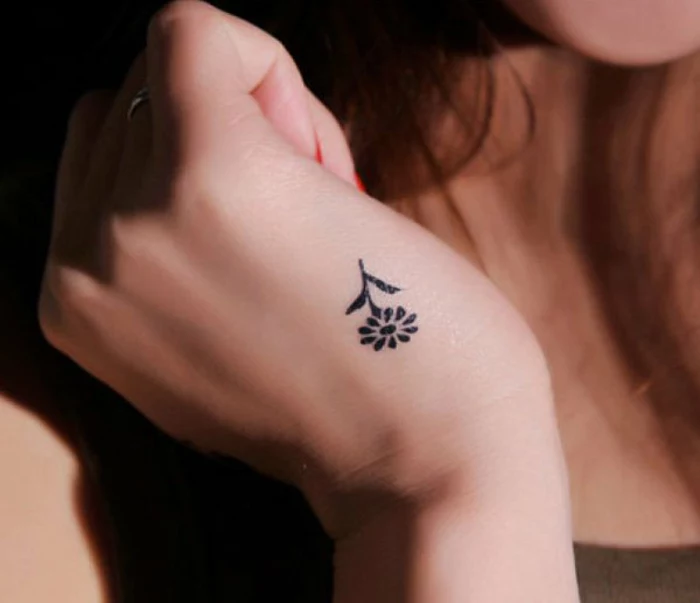
The Spiritual Lotus
A truly powerful symbol. The lotus grows in murky, muddy water but pushes through to bloom clean and beautiful on the surface. Because of this, it’s a huge symbol of purity, spiritual enlightenment, and overcoming hardship. It’s a popular choice for anyone marking a personal triumph over a tough time.
The Lush Peony
In Eastern cultures, the peony is a big deal, symbolizing wealth, honor, and good fortune. Because its petals are so large and dense, it’s fantastic for covering large areas like a shoulder or thigh. Pro tip: Peonies are also one of the best flowers for cover-up tattoos because their dark leaves and deep, shadowy petals can easily hide old, unwanted ink.
The Sunny Sunflower
It’s hard to be sad when you’re looking at a sunflower. These represent happiness, adoration, and loyalty. Since they literally turn their heads to follow the sun, they’re a wonderful symbol of optimism and looking towards the light. They make for such bright and positive tattoos.
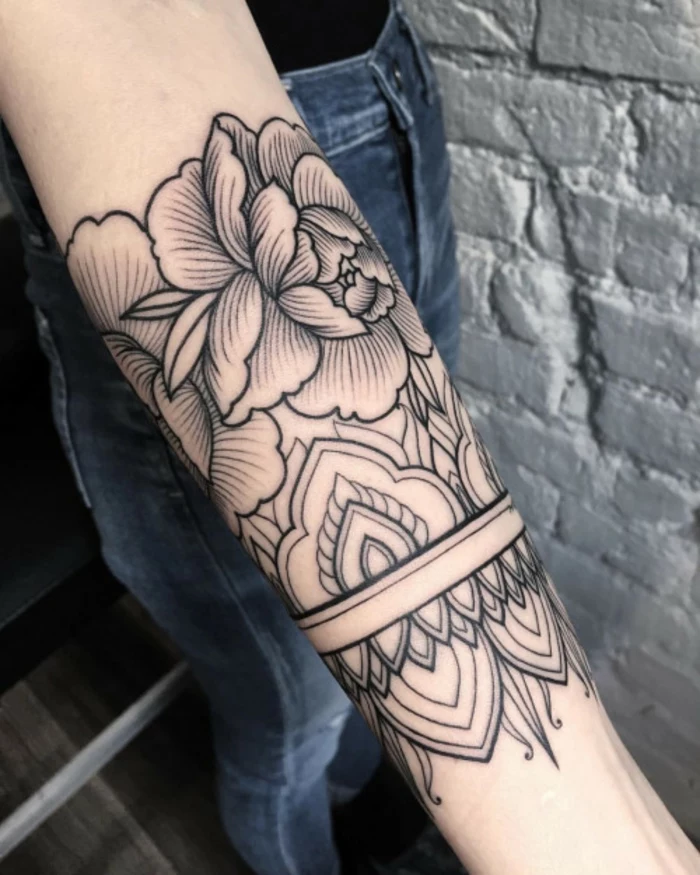
The Complex Poppy
The poppy is a flower with a dual personality. On one hand, it can symbolize peace and sleep. On the other, due to its connection to opium, it can also represent death. The red poppy, in particular, has become an iconic symbol of remembrance for soldiers lost in conflict.
The Real-World Journey: From Idea to Healed Art
Getting a tattoo is a partnership. It takes research from you and skill from the artist. Here’s how to navigate the process like a pro.
Finding the Right Artist (This is a Big Deal)
Please, do not choose an artist based on price or who can get you in tomorrow. A cheap tattoo is almost never a good tattoo, and this is on you for life. Instead, stalk their portfolio. Find someone whose style truly matches what you envision. If you want a delicate, single-needle wildflower, don’t go to an artist whose Instagram is full of bold, heavy traditional work.
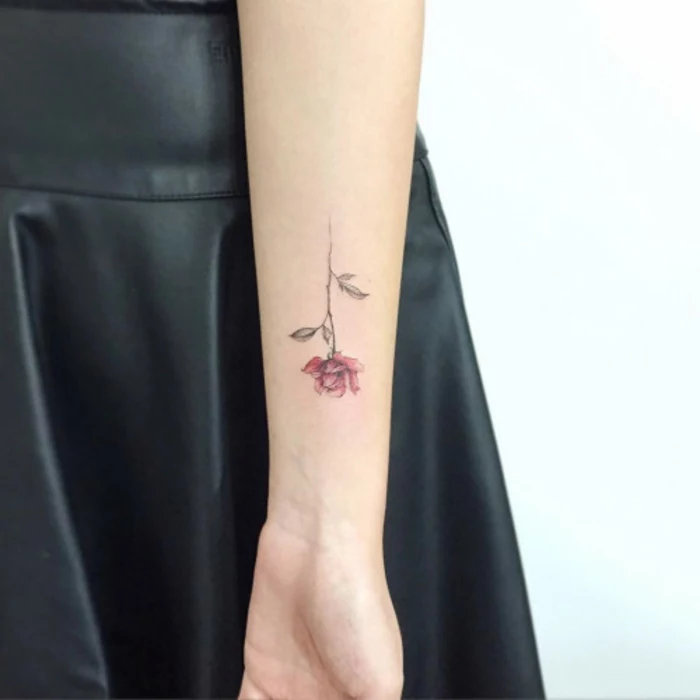
Heads up! Look for photos of HEALED tattoos, not just the fresh, glossy ones taken moments after the session. Healed work shows the artist’s true skill and how their work settles into the skin. A great tattoo looks good forever, not just for a day.
The Consultation and… The Money Talk
A good artist will always do a consultation for a custom piece. This is where we collaborate. Come prepared with reference photos of tattoos you like, but also of the actual flowers. Be open to professional input! We might suggest a tweak to the placement to make it flow better with your body—we’re trying to make it the best tattoo possible.
During the consult, be ready to put down a deposit. This is standard practice and it secures your appointment. It’s usually non-refundable and can range from $100 to over $500 for massive projects, but it always goes toward the final cost of your tattoo. This is also the time to ask some key questions:
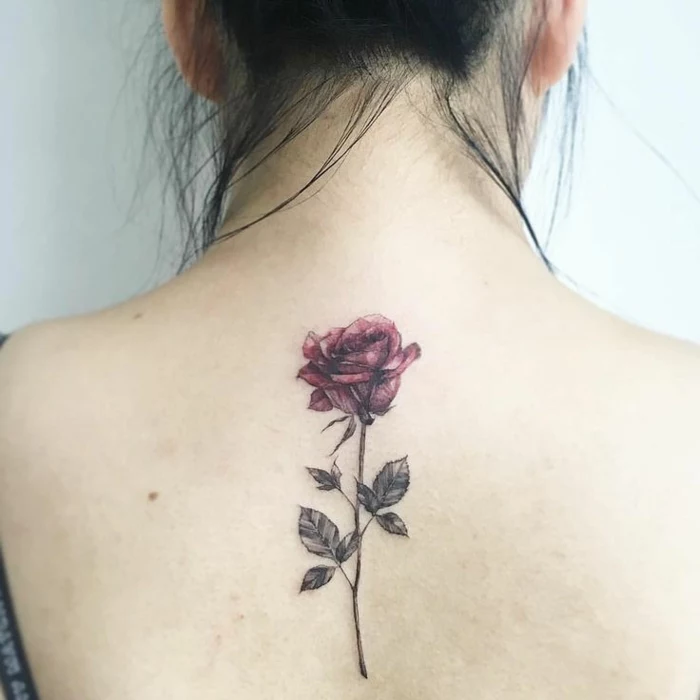
- “What’s your hourly rate?” (Rates can vary wildly, from $150/hr to $400+/hr depending on the artist’s experience and location).
- “Do you have photos of healed work in this style?”
- “Based on this size and detail, can you give me a rough time and cost estimate?”
- “How do you think this design will age on this part of my body?”
Placement, Pain, and Realistic Timelines
Where you put the tattoo matters for both aesthetics and pain. So, how much is this going to hurt? Let’s be frank: it hurts. But some spots are way worse than others.
A quick-and-dirty pain guide: The most painful spots are usually bony areas with thin skin, like the ribs, feet, sternum, and the ditch of your elbow. The least painful spots tend to be the fleshier ones, like your outer thigh, bicep, and forearm. Of course, everyone’s tolerance is different!
As for time, a small, fine-line floral piece might only take an hour or two. A more complex, shaded flower the size of your palm could be 3-5 hours. And a full floral sleeve? That’s a major commitment. You’re looking at a marathon of multiple sessions, easily totaling 20 to 50 hours of work. To save money, you could always start with a smaller piece from a great artist or keep an eye out for artist flash days, where they offer pre-drawn designs at a set price.
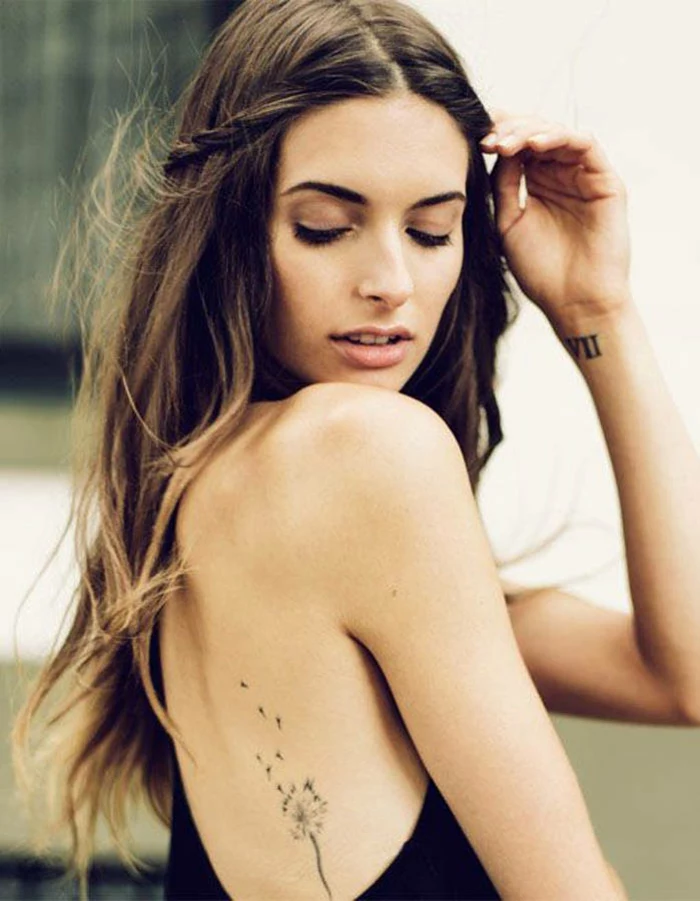
Aftercare: Now It’s Your Job
Once you walk out of the studio, the tattoo is your responsibility. An artist can do a perfect job, but bad aftercare can ruin it. I usually recommend a clear medical bandage that stays on for a few days to protect it. After that, it’s simple.
Here’s your aftercare shopping list:
- Unscented liquid soap: Something gentle like Dial Gold works great (about $4).
- Light, unscented lotion: A bottle of Lubriderm or Aveeno is perfect (around $8).
- Clean paper towels: Don’t use your fuzzy bath towel, which can hold bacteria.
Just wash the tattoo gently twice a day, pat it dry with a paper towel, and apply a very thin layer of lotion. Don’t pick, don’t scratch, and don’t soak it in a tub or pool for at least two weeks. It’s that simple.
Beyond the Basics: Big Projects and Cover-Ups
The organic shapes of flowers make them incredibly useful for complex projects, from hiding old mistakes to tying a bunch of random tattoos together.
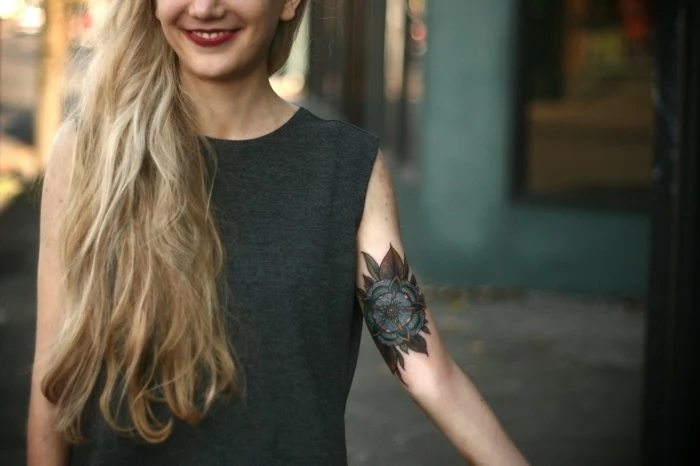
I do a ton of cover-up work, and flowers are my secret weapon. You have to design something larger and darker than the old piece, and the complex petals and dark leaves of a peony or rose are perfect for hiding old lines and faded ink. The results can be life-changing.
A full floral back piece or sleeve is a huge undertaking. Budget-wise, be prepared. A detailed sleeve can easily cost anywhere from $4,000 to $10,000+, built up over many sessions. It’s a journey that builds a real relationship between the artist and client.
The Boring but Crucial Stuff: Safety & The Long Haul
A professional tattoo studio should feel as clean as a doctor’s office. Needles must be single-use and opened in front of you. Everything that touches you should be covered in disposable plastic barriers. Any reusable equipment must be sterilized in an autoclave. Never, ever get tattooed in someone’s kitchen—the risk is just not worth it.
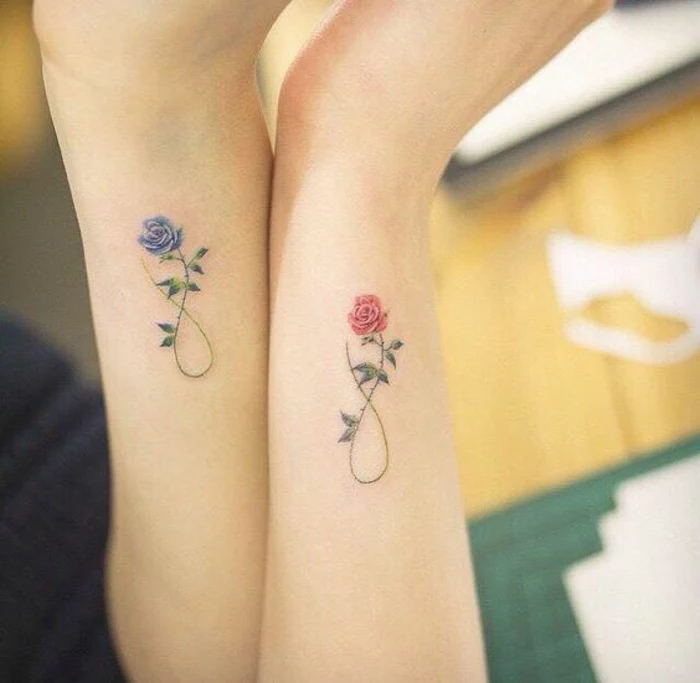
And finally, remember that your tattoo will age with you. Over the years, lines will soften and spread a tiny bit—it’s normal. Boldly applied tattoos tend to hold up better than ultra-delicate ones. But the number one enemy of your tattoo is the sun. UV rays break down ink. The best thing you can do to protect your investment for decades to come is simple: once it’s healed, use a high-SPF sunscreen. It’ll keep your flowers looking bright and beautiful for a lifetime.
Inspiration Gallery
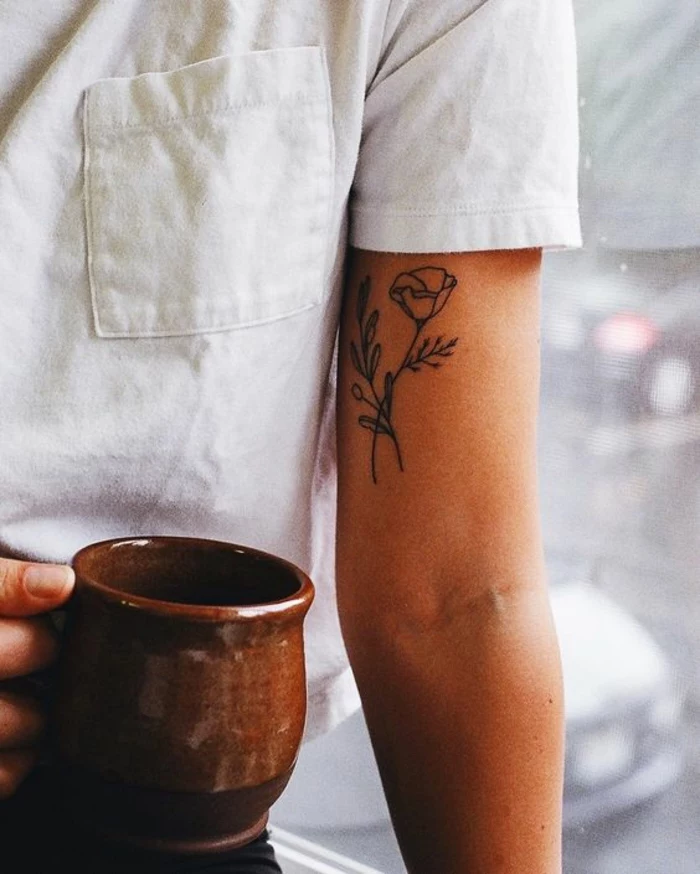
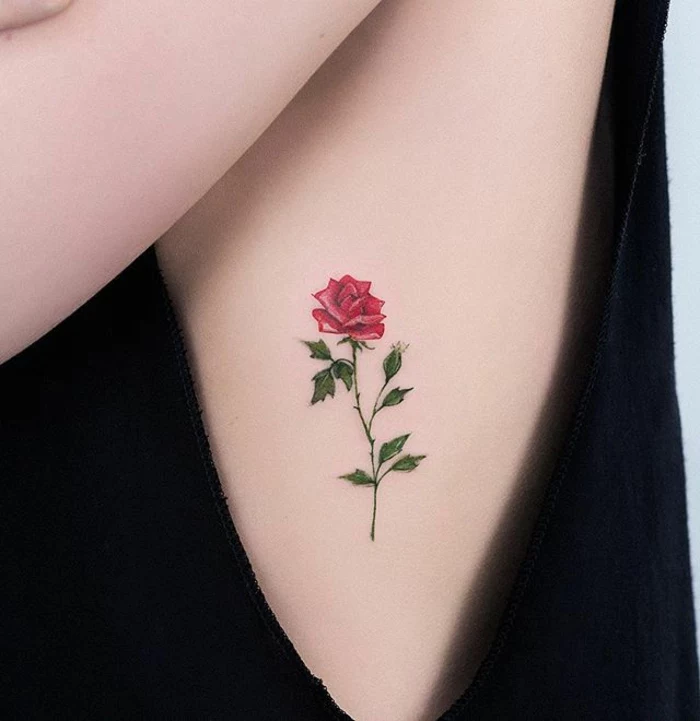
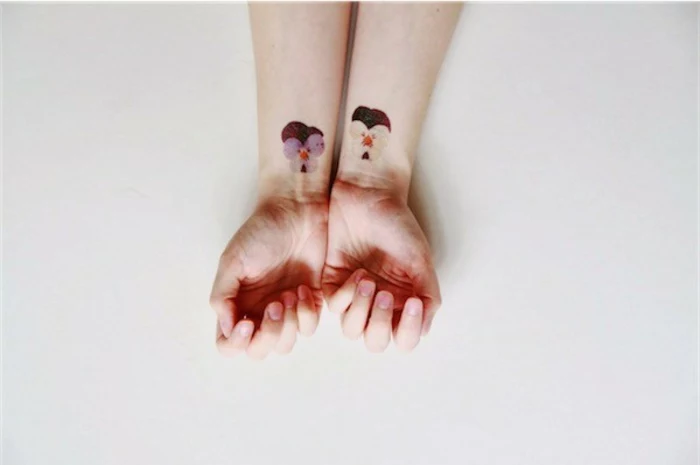
Fine Line Florals: Delicate, often single-needle work that mimics a pencil sketch. They’re subtle and heal quickly but can be more prone to fading over time and require an artist with a very steady hand.
Bold Traditional: Think classic American Traditional style. These feature thick black outlines and a saturated, limited color palette. They are designed to age exceptionally well, remaining clear and vibrant for decades.
The choice depends entirely on your aesthetic: ephemeral elegance or timeless power.
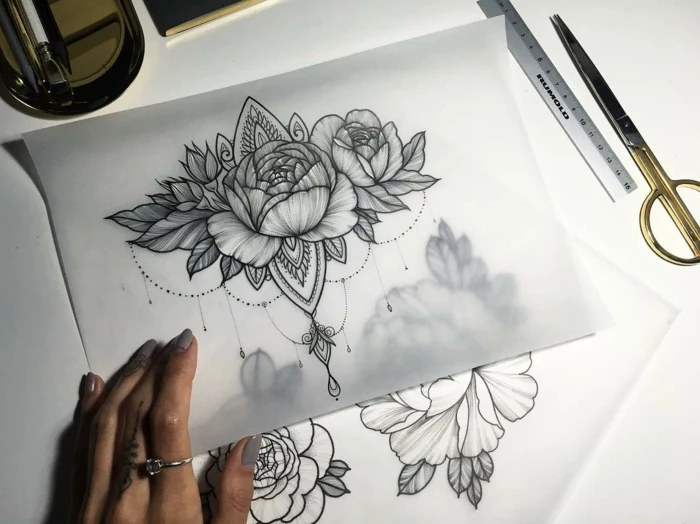
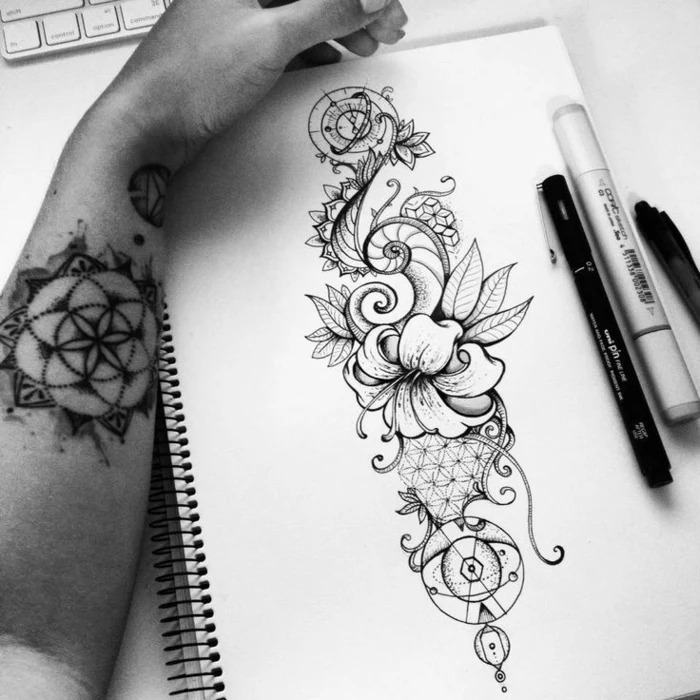
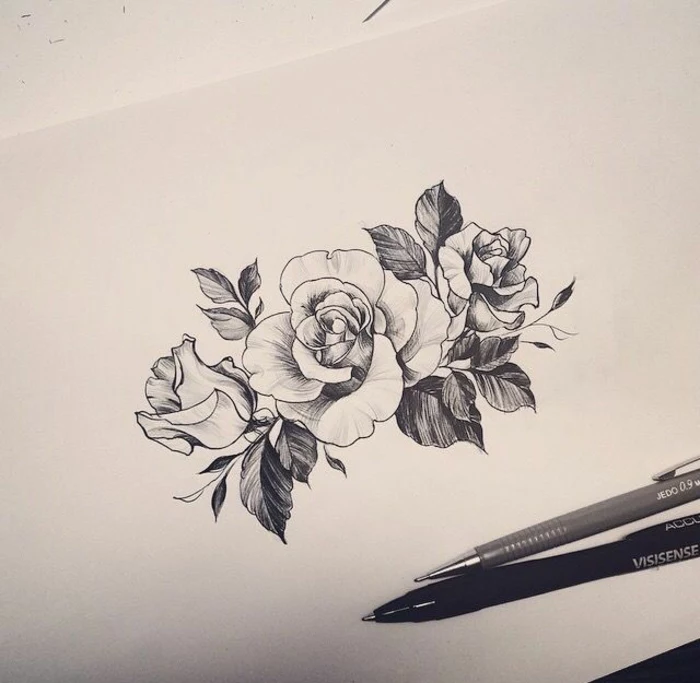
Did you know that modern tattoo inks are incredibly stable? High-quality brands like Eternal Ink or World Famous Ink use pigment-based formulas that are far more resistant to UV degradation than the inks of past decades, meaning your vibrant reds and yellows will stay truer for longer.
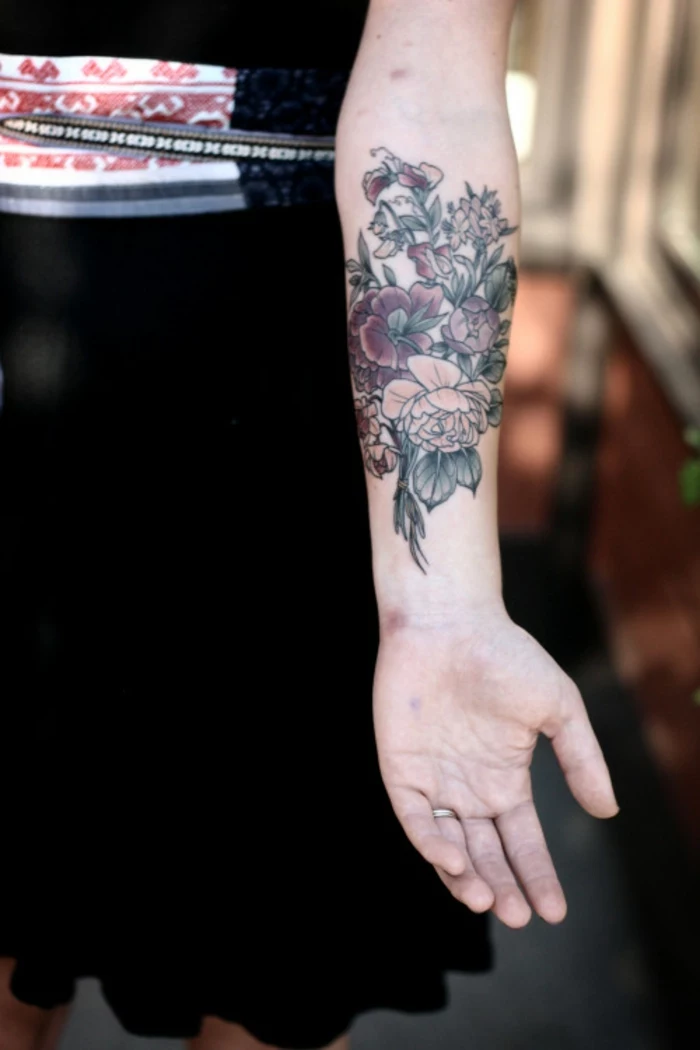
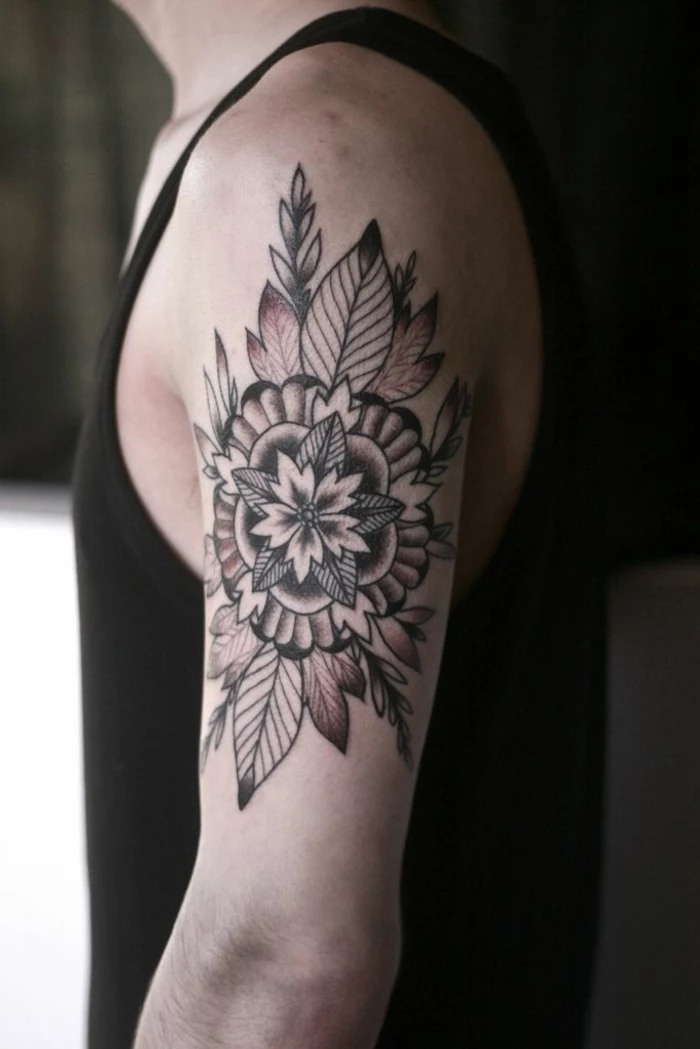
When planning your floral piece, think beyond the flat drawing. Consider how a stem will wrap around your forearm, how a peony’s petals might cup over your shoulder blade, or how a vine could snake up from your ankle. A great tattoo artist doesn’t just copy an image; they sculpt it to your body’s unique topography, creating a design that moves and lives with you.
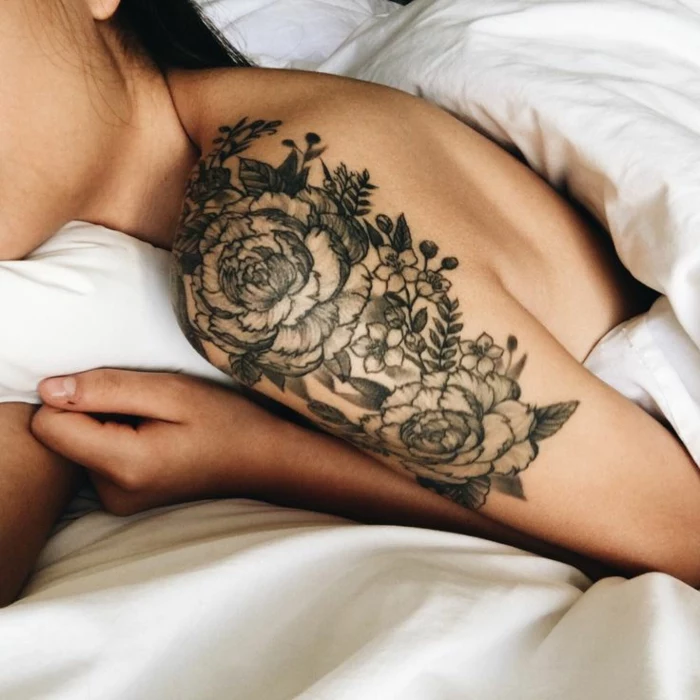
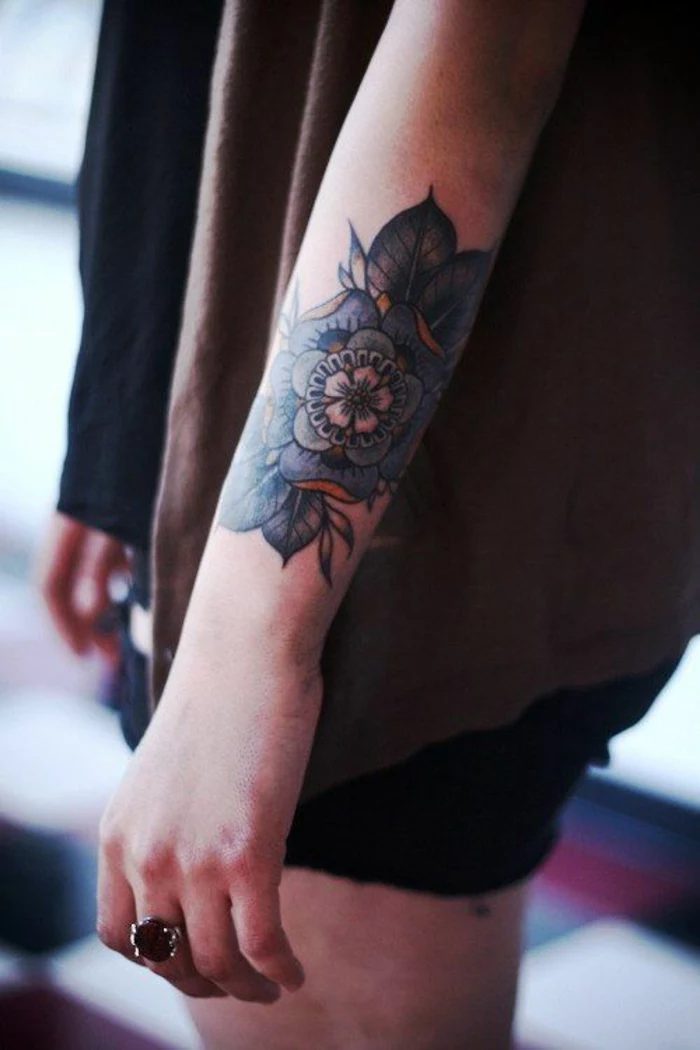
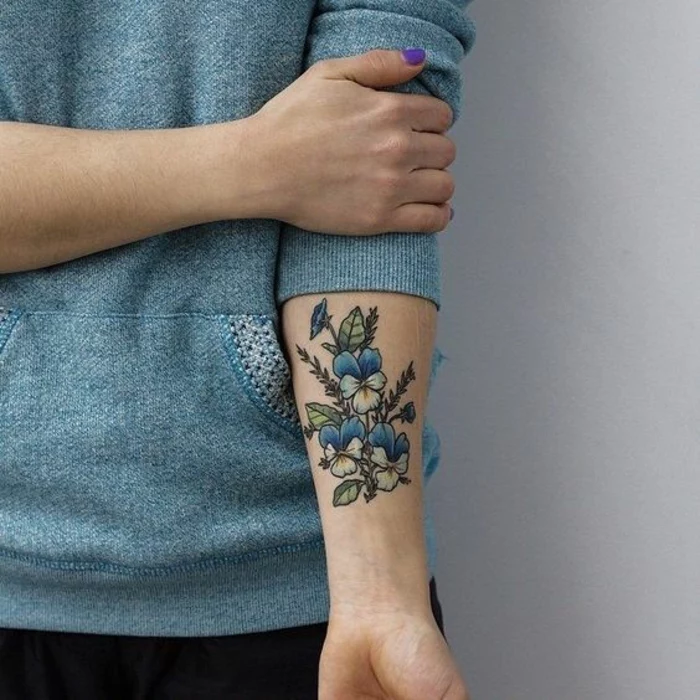
- Create a mood board on Pinterest with floral styles you love.
- Moisturize the target area daily for a week beforehand.
- Get a full night’s sleep and eat a solid meal before your appointment.
- Avoid alcohol and blood-thinning painkillers for 24 hours prior.
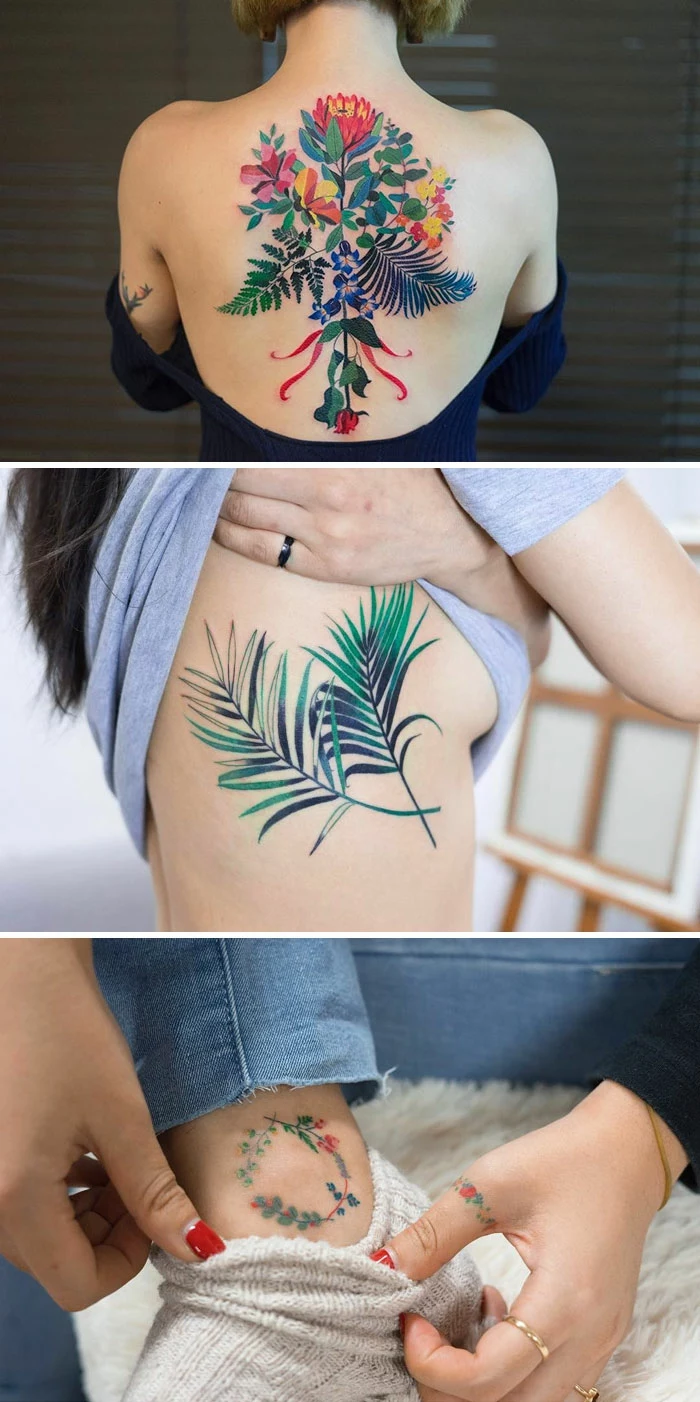
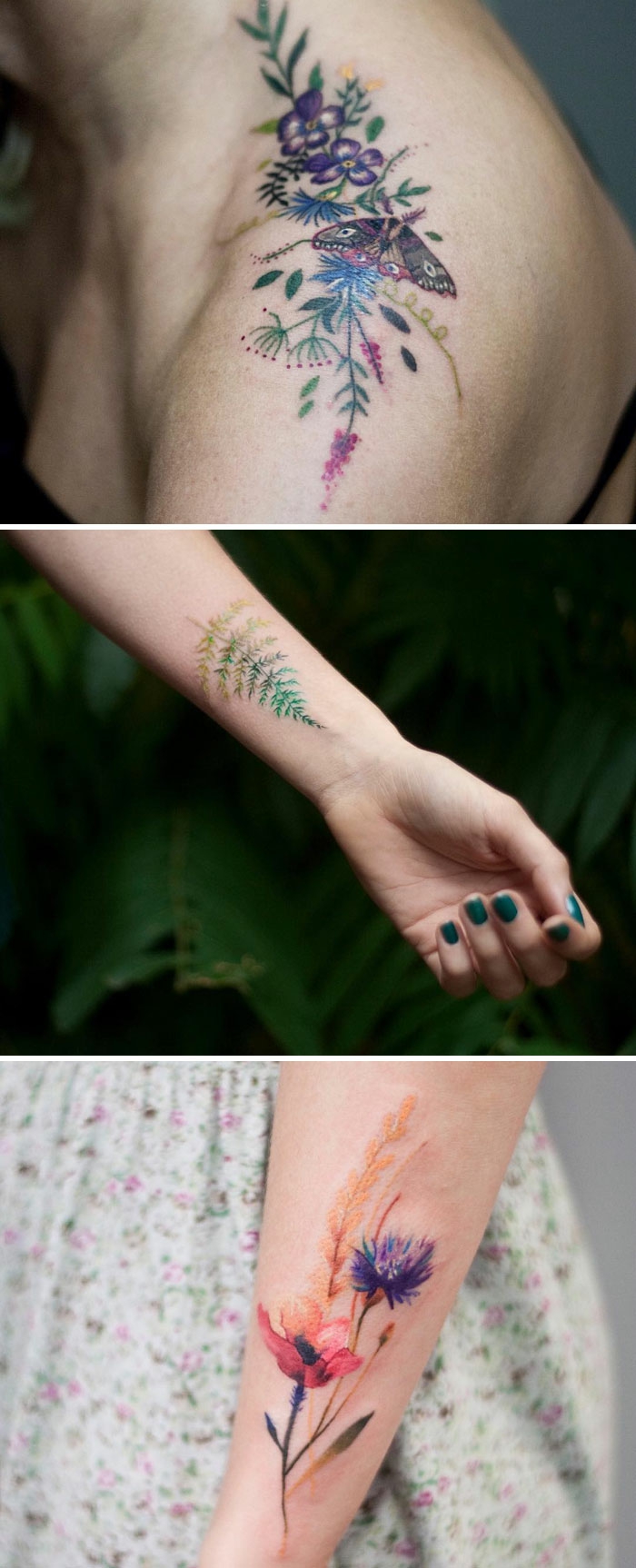
Will my tiny, detailed wildflower tattoo turn into a blurry mess over the years?
It’s a valid concern! Ink naturally spreads a tiny bit under the skin over time. The key is working with an artist who understands this aging process. They’ll ensure there’s enough ‘negative space’ between fine lines and details. A design that looks perfect on paper might need to be sized up by 15-20% to guarantee its long-term readability on skin. Trust your artist’s judgment on size.
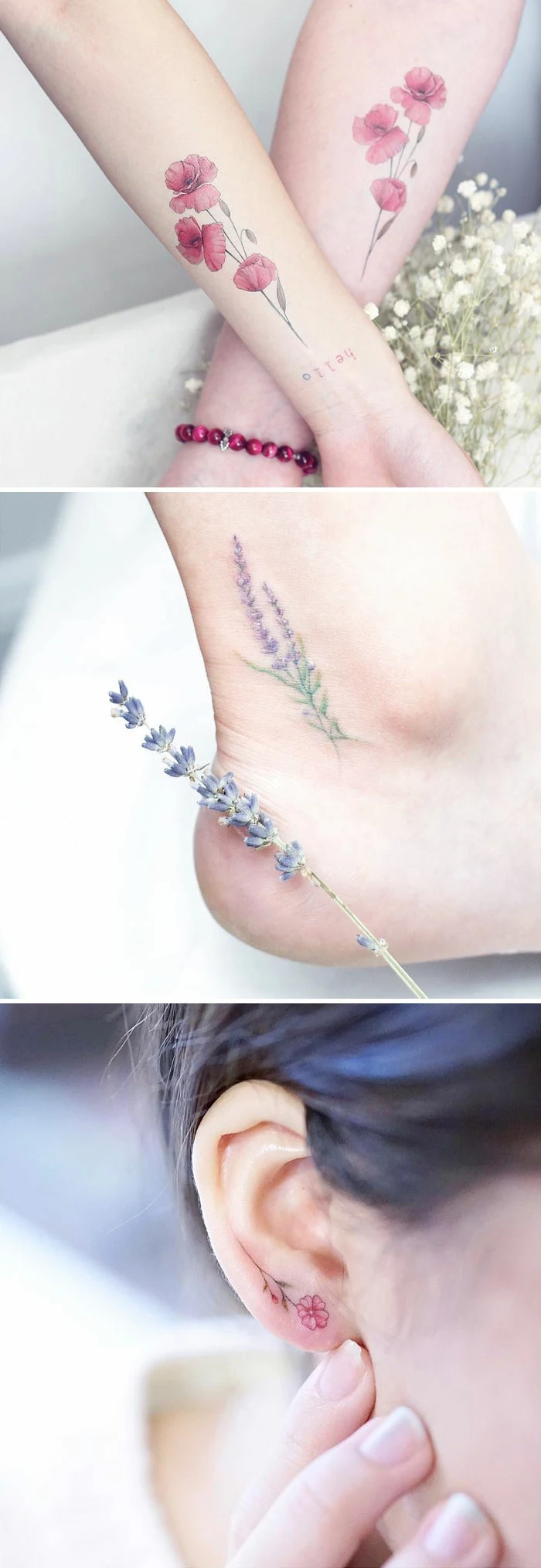
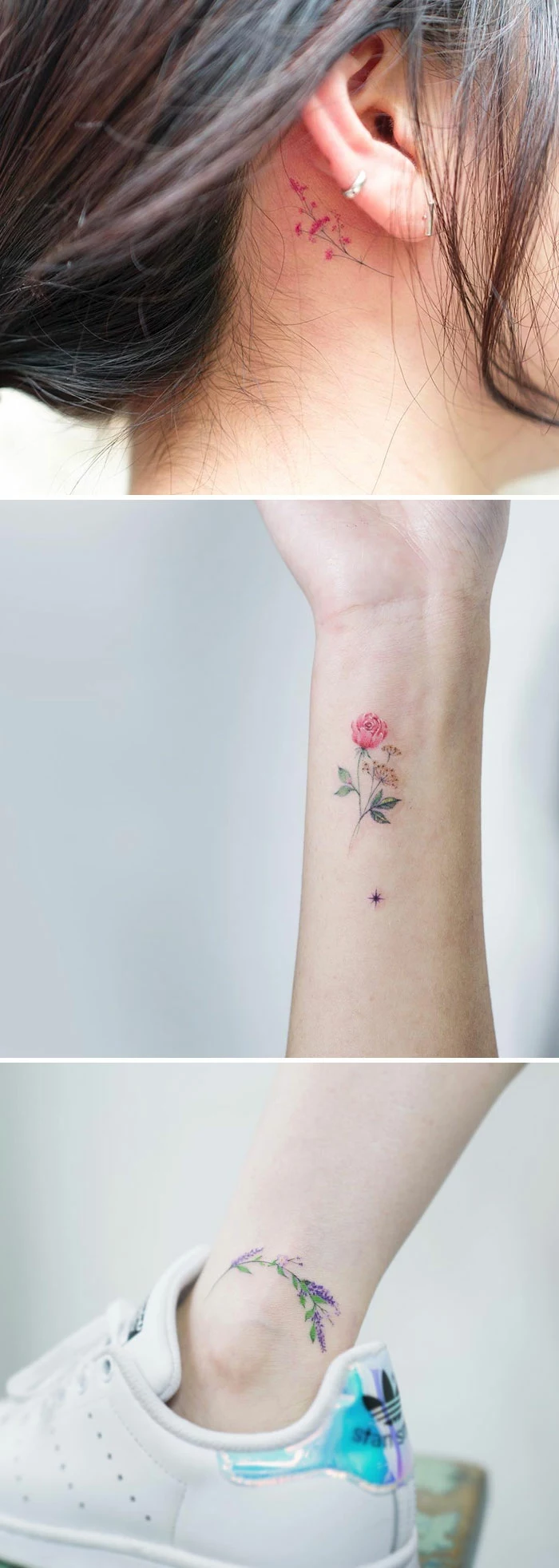
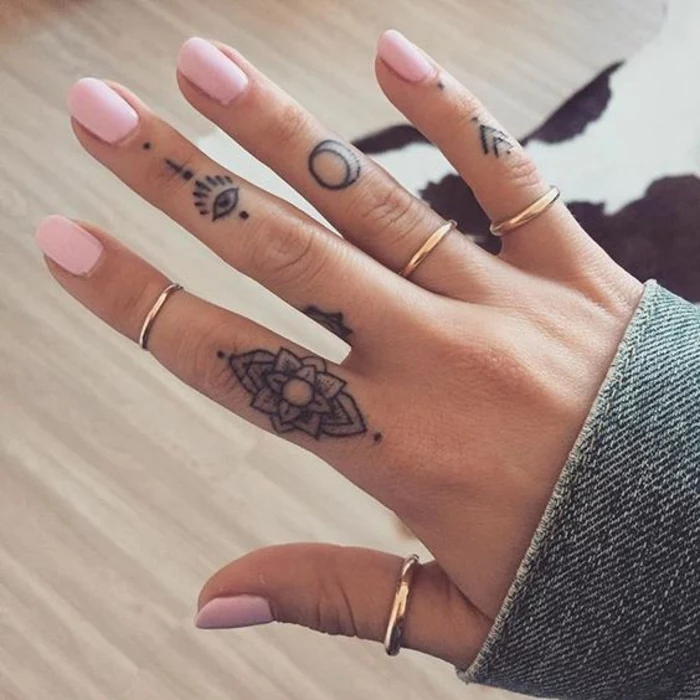
The number one enemy of a vibrant floral tattoo: The sun. Unprotected sun exposure is the primary cause of color fading and line blurring. Make a high-SPF, broad-spectrum sunscreen your tattoo’s best friend. Apply it religiously to keep your bouquet looking fresh, not wilted.
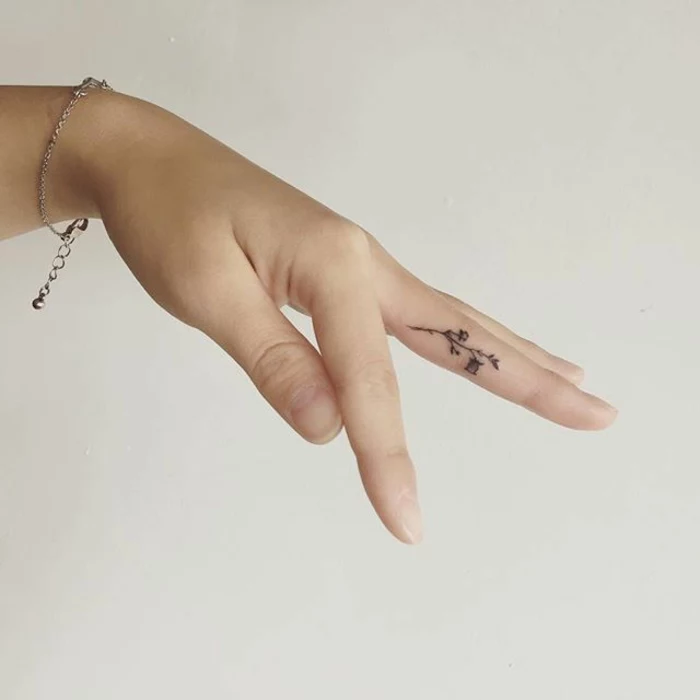
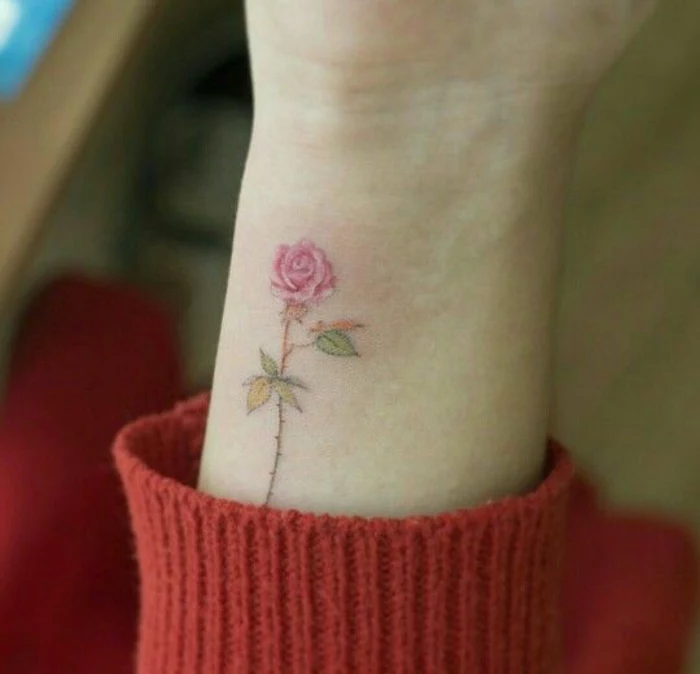
In traditional Japanese tattooing, or Irezumi, flowers are rich with meaning. The chrysanthemum (‘kiku’), for example, is associated with the Emperor and represents perfection, longevity, and joy. It’s often depicted with powerful, stylized wind bars, showing how nature’s beauty can coexist with its force.
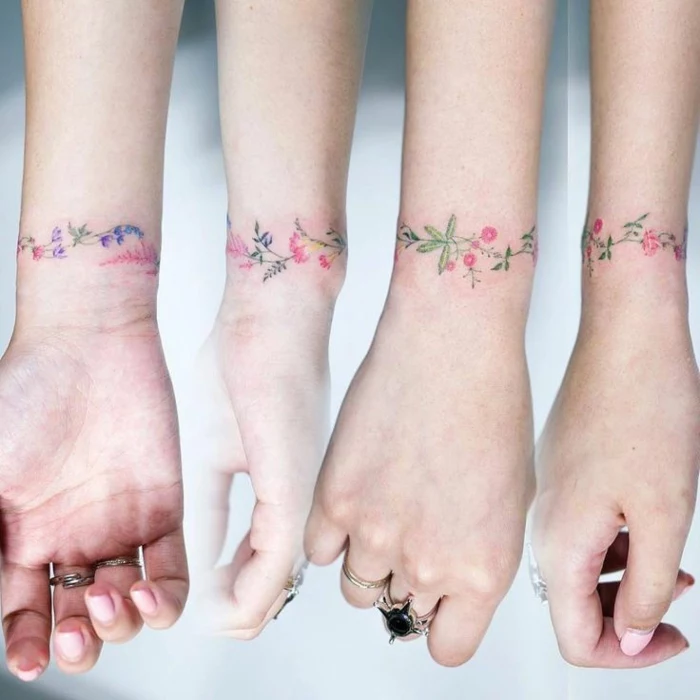
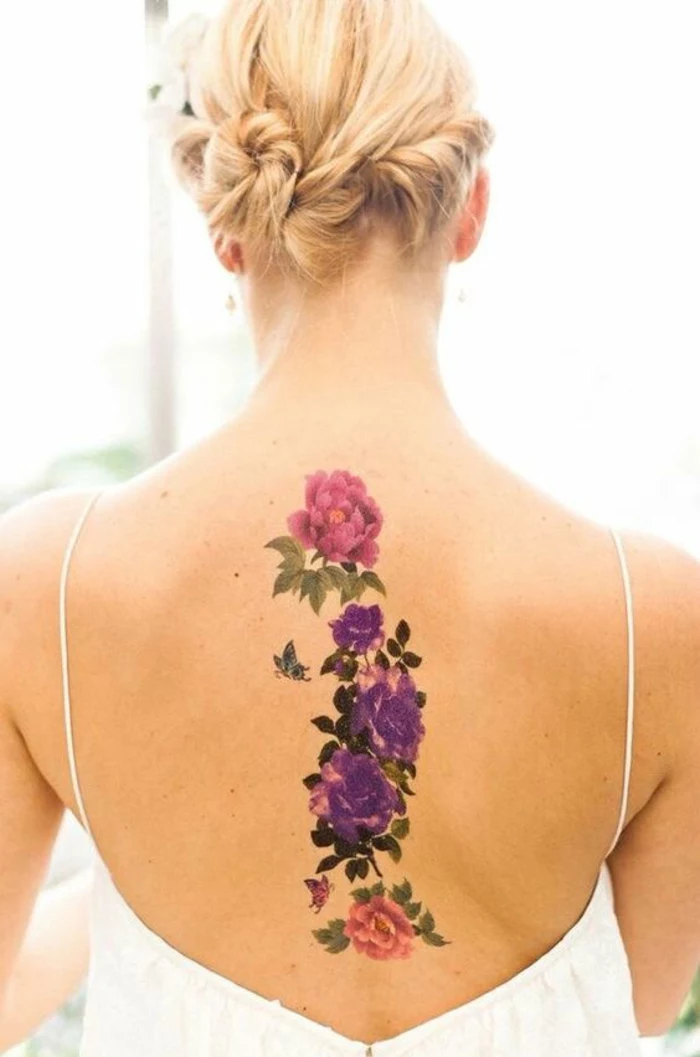
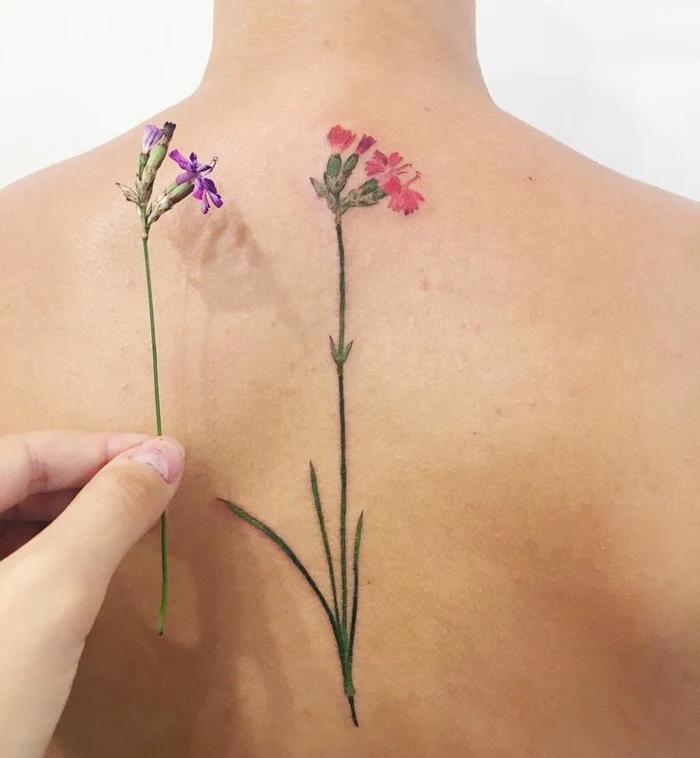
A growing trend is the ‘birth flower bouquet’ tattoo, where you combine the symbolic flowers for each member of your family into a single, beautiful arrangement.
- January: Carnation (love, fascination)
- June: Rose (love, passion)
- October: Marigold (creativity, warmth)
It’s a deeply personal and artistic way to carry your loved ones with you.
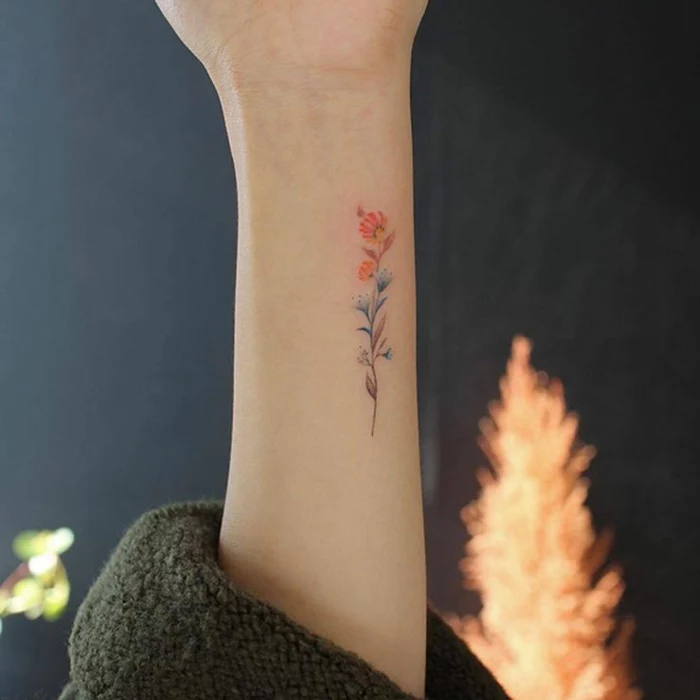

A study found that a significant portion of people seeking tattoo removal did so because the tattoo was poorly executed or not well-planned.
For a floral piece, this often means choosing an artist whose portfolio doesn’t show strong floral work, or insisting on a design that is too small for its level of detail. Vetting your artist and listening to their expert advice on design limitations is the best way to avoid future regret.

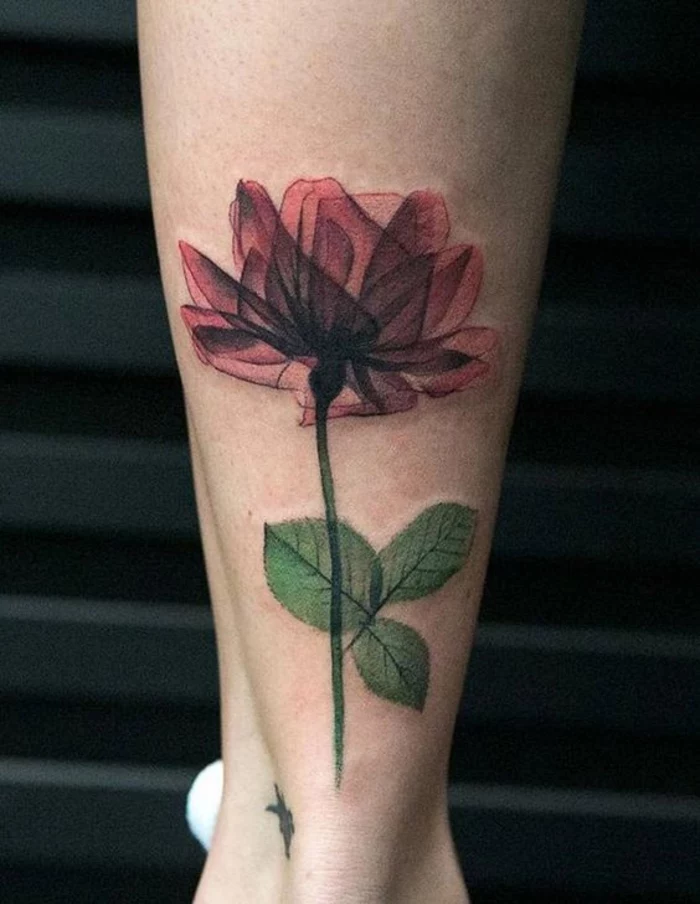
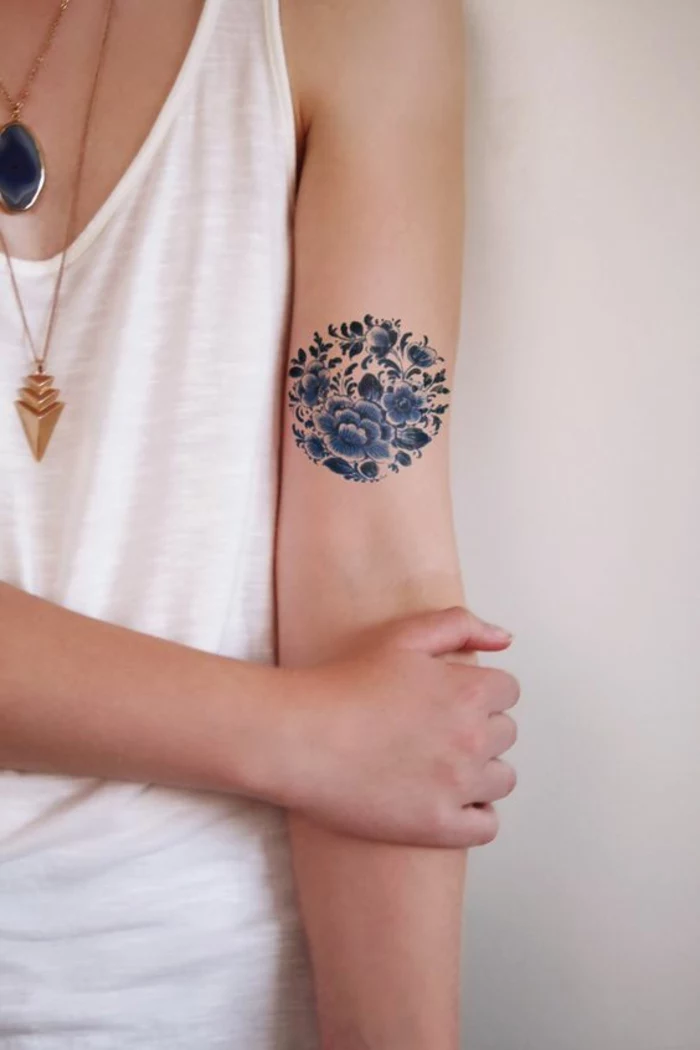
Wondering about cost? Most custom tattoo work is priced by the hour, and rates can vary wildly based on the artist’s experience and location. A simple, palm-sized, black-and-grey rose might take an hour or two, while a full-color, realistic floral sleeve is a multi-session investment spanning 20+ hours. Always ask your artist for a rough estimate during your consultation.
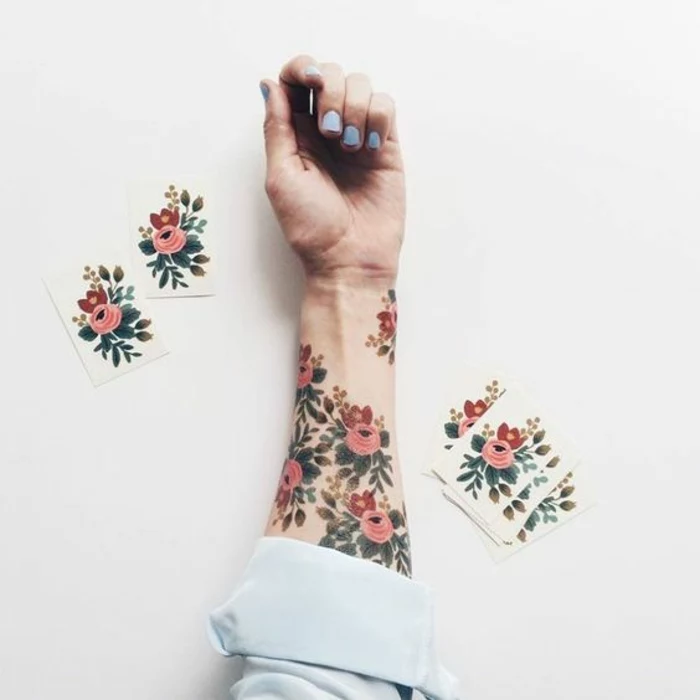
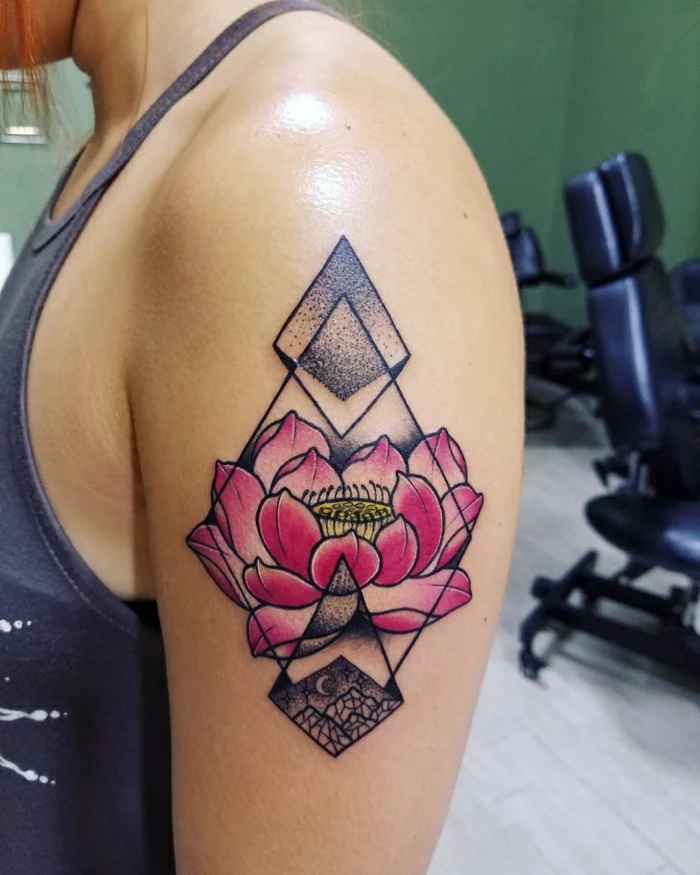
- Vibrant, saturated colors that last.
- Crisp lines that don’t haze over.
- A comfortable, itch-free healing process.
The secret? A disciplined aftercare routine. Using a quality product like Hustle Butter Deluxe or a simple unscented lotion like Lubriderm, and cleaning the tattoo as directed, is just as important as the artist’s work itself.
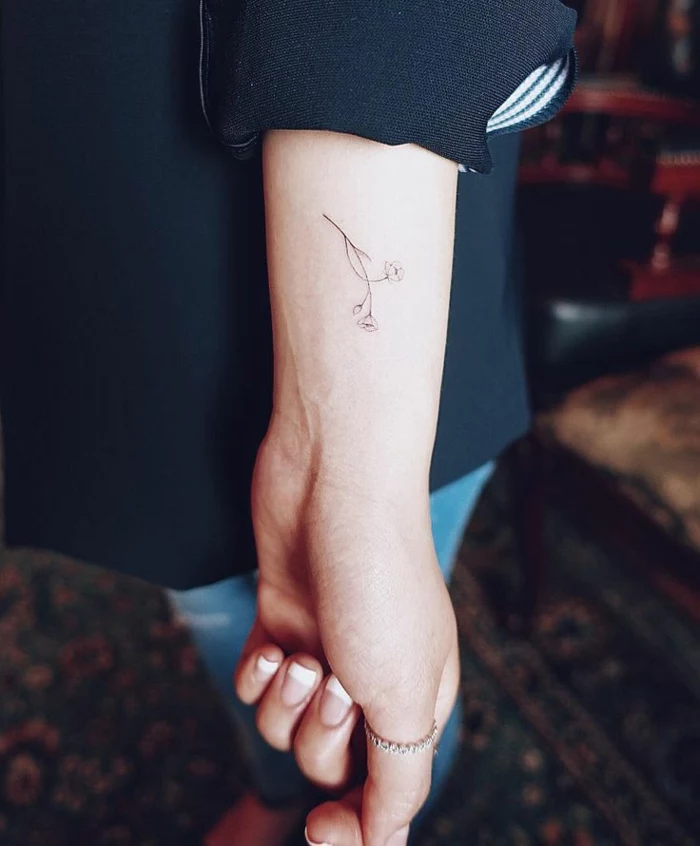
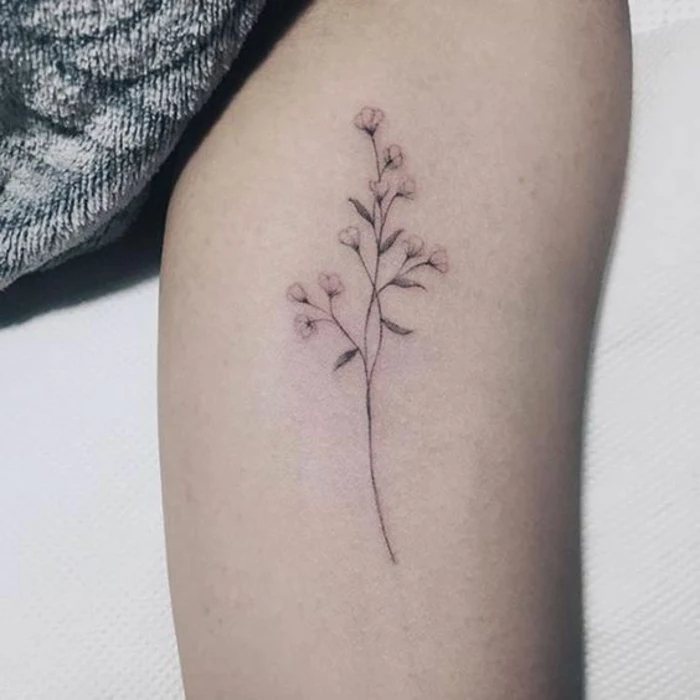
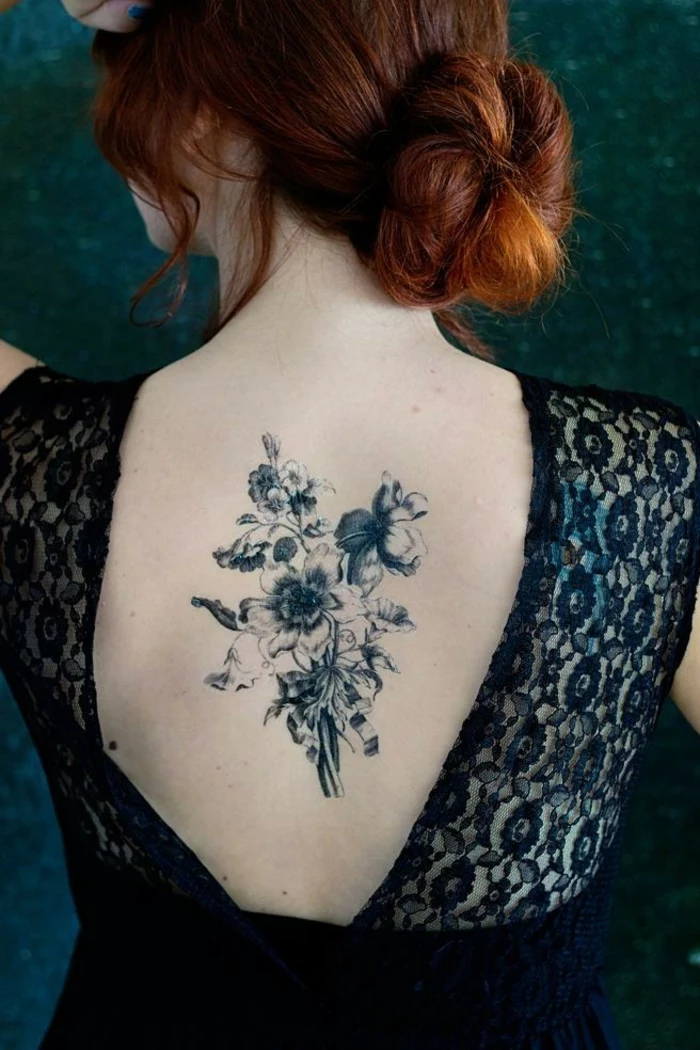
The ‘watercolor’ tattoo style has exploded in popularity for florals. It ditches bold black outlines in favor of soft color gradients and painterly ‘splatters’ that mimic a brushstroke. To achieve this look, artists use advanced color blending and shading techniques with a range of needle groupings. It creates a soft, ephemeral vibe, but be sure to choose an artist who specializes in this style, as it requires specific skills to ensure it heals beautifully.
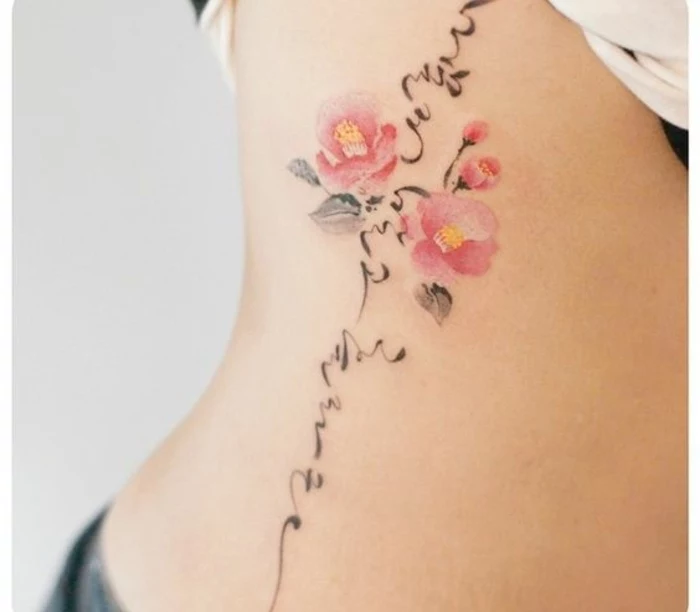
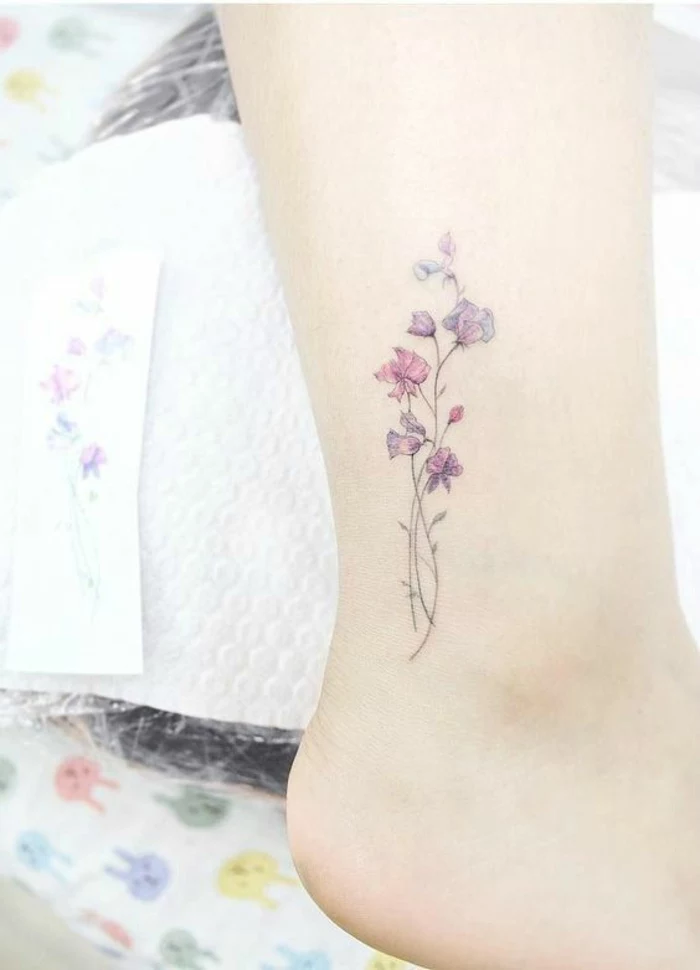
Color Realism: Aims for a photorealistic look, using a full palette of inks to capture every shadow and highlight on a petal. It’s breathtaking but requires more time and can be more susceptible to fading if not cared for.
Black & Grey: Focuses on form, light, and shadow using only black ink diluted to various tones. This style has a timeless, sculptural quality and tends to age very gracefully.
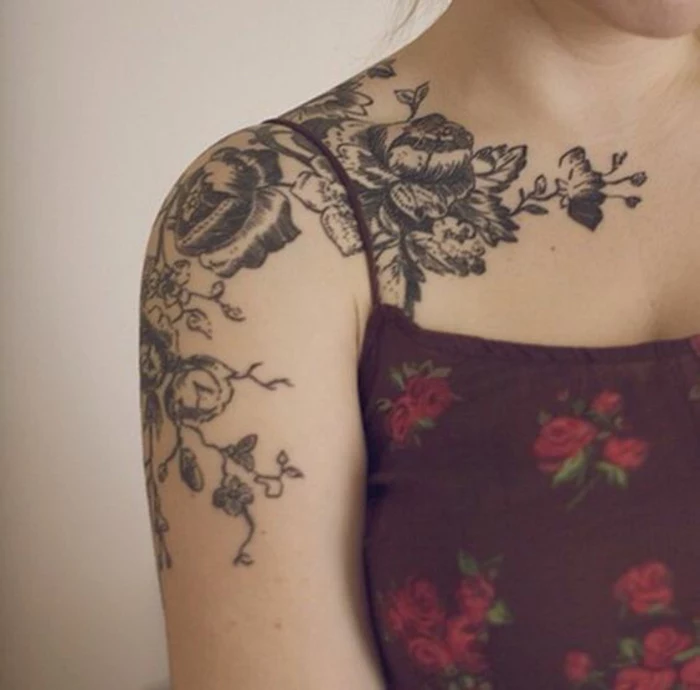
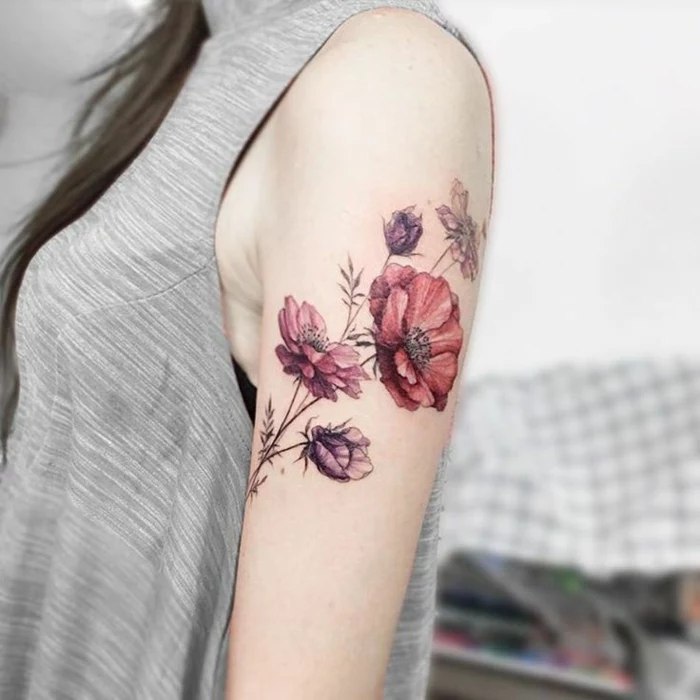

Can I get a delicate, all-white ink flower tattoo?
While it’s technically possible, most reputable artists advise against it. White ink is thicker and harder to work with. It doesn’t hold its brightness and can fade to a yellowish or beige tone over time, sometimes disappearing into the skin or looking like a faint scar. It’s best used as a highlight alongside other colors, not as the main event.
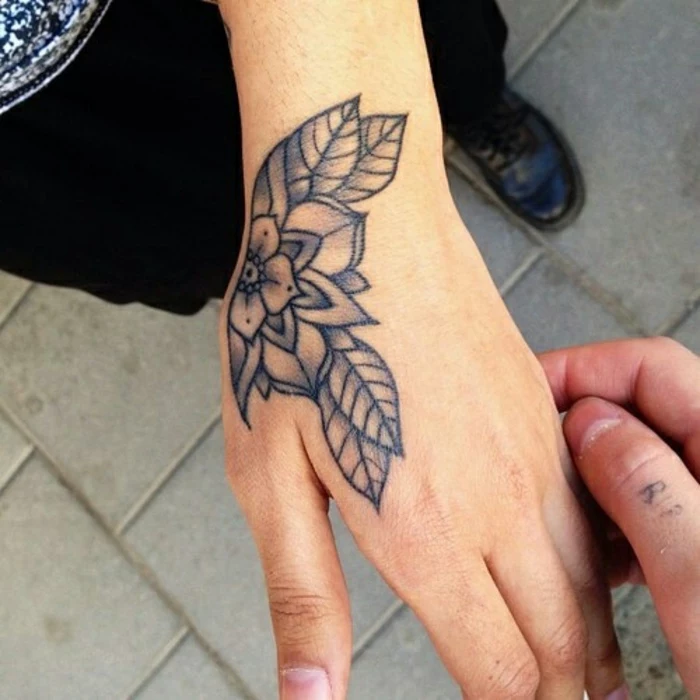

Avoid Pinterest-perfect copies. Use online images for inspiration, but let your artist create something unique for you. A custom design will not only be one-of-a-kind, but it will also be tailored to fit the specific curves and flow of your body, making it a true piece of personal art.
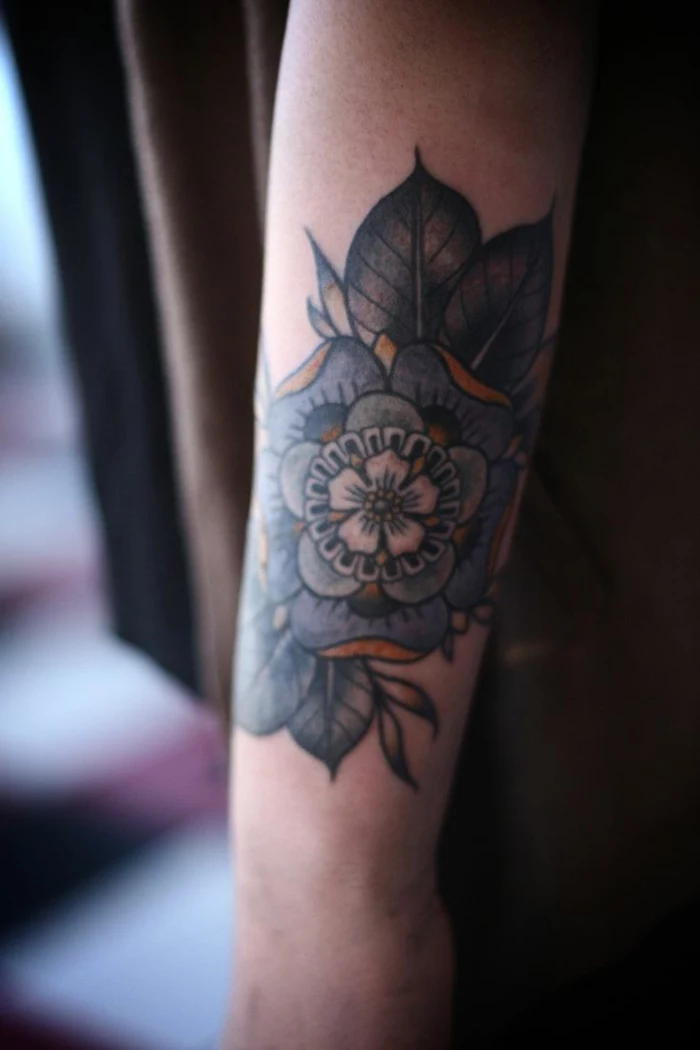
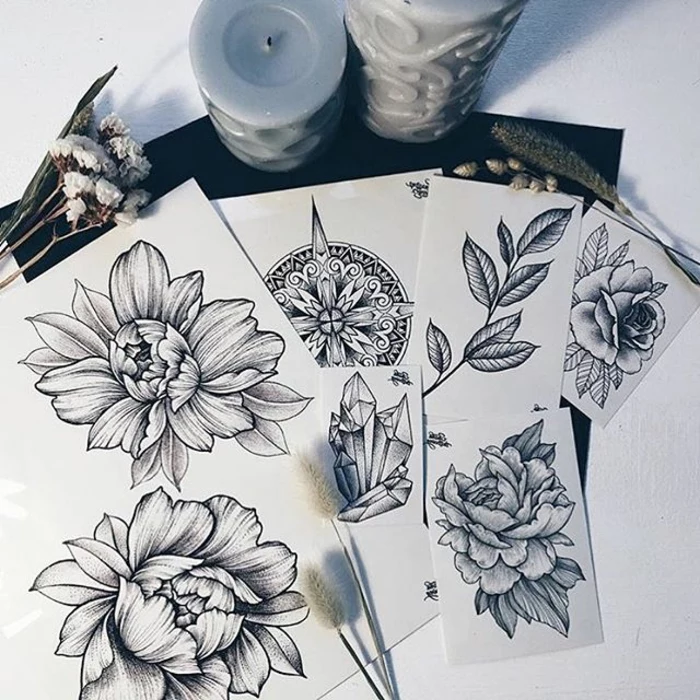
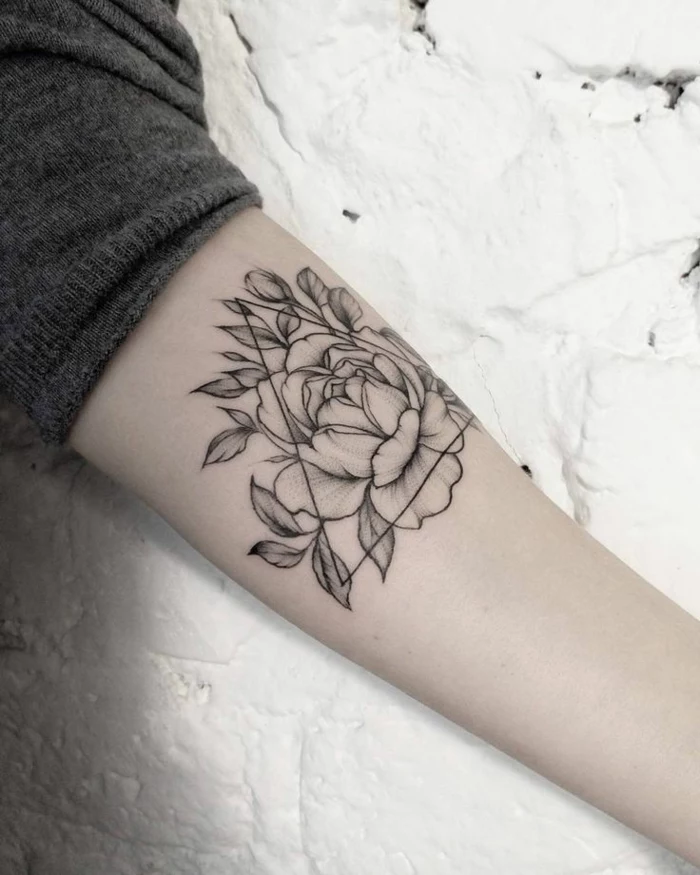
Thinking about the ethics of your ink? It’s easier than ever to get a fully vegan tattoo.
- The inks are pigment-based and contain no animal byproducts like bone char or gelatin.
- The stencil paper and aftercare balms (like Hustle Butter) are also often plant-based.
Just ask your artist—most studios today are proud to offer vegan-friendly options from brands like StarBrite or Silverback Ink®.
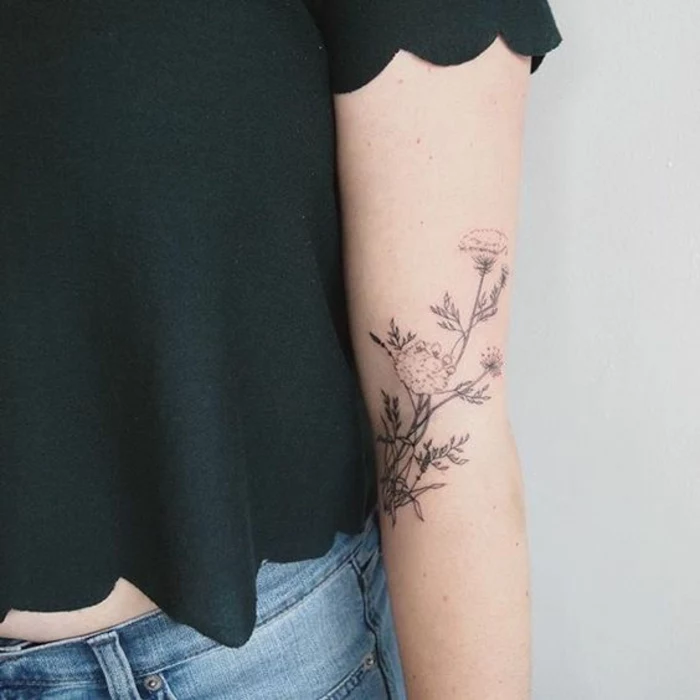
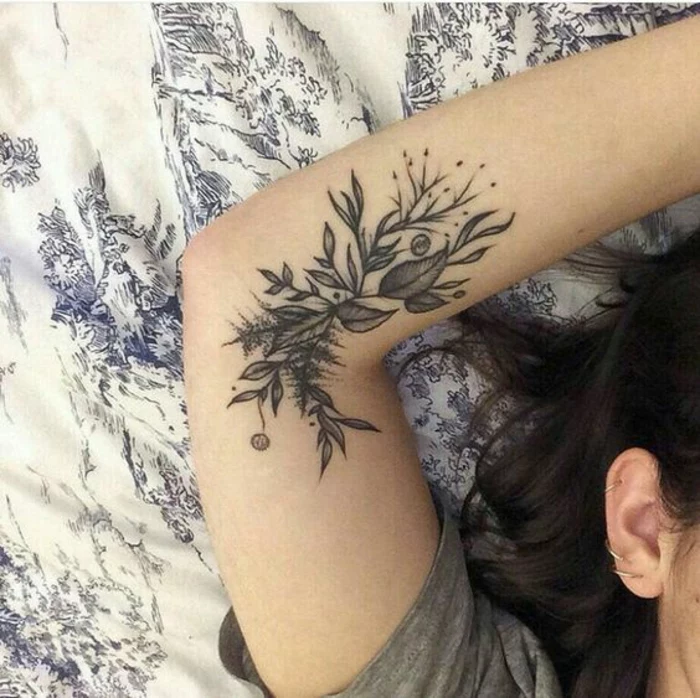
Adding a tiny honeybee buzzing around a lavender sprig or a butterfly landing on a rose petal can bring your floral tattoo to life. These small additions add a sense of movement and narrative, transforming a static image into a dynamic little scene on your skin.
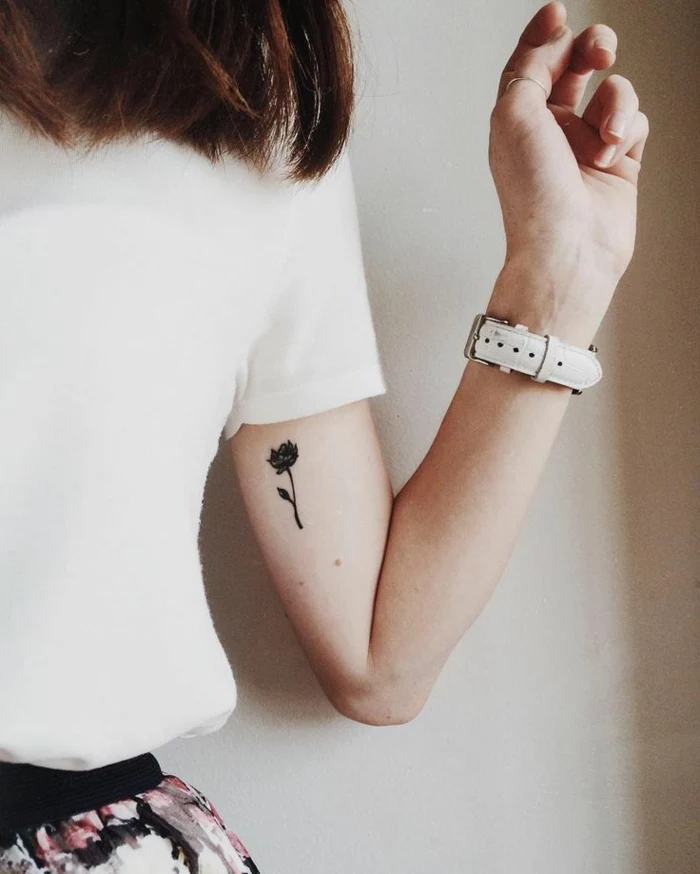
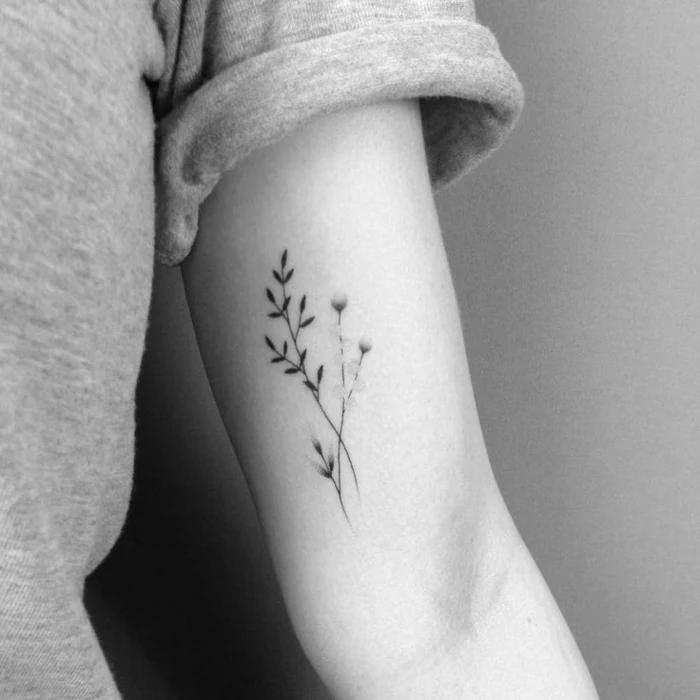
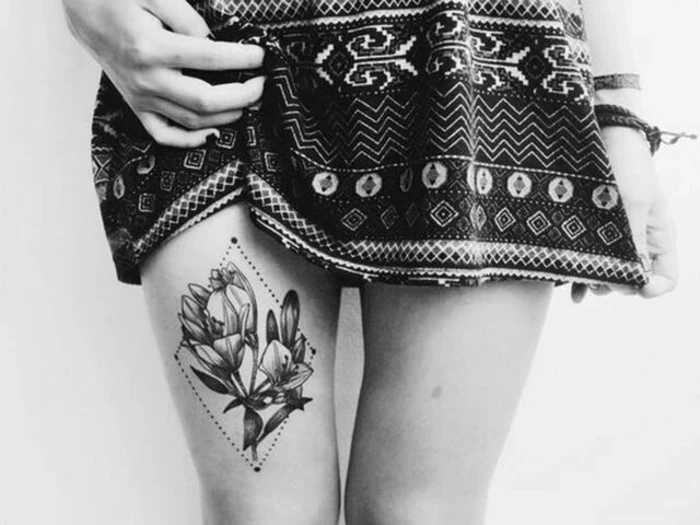
In flower language, the peony symbolizes wealth, honor, and compassion. Inking one on your skin is more than just an aesthetic choice; it’s a way of carrying those values with you.
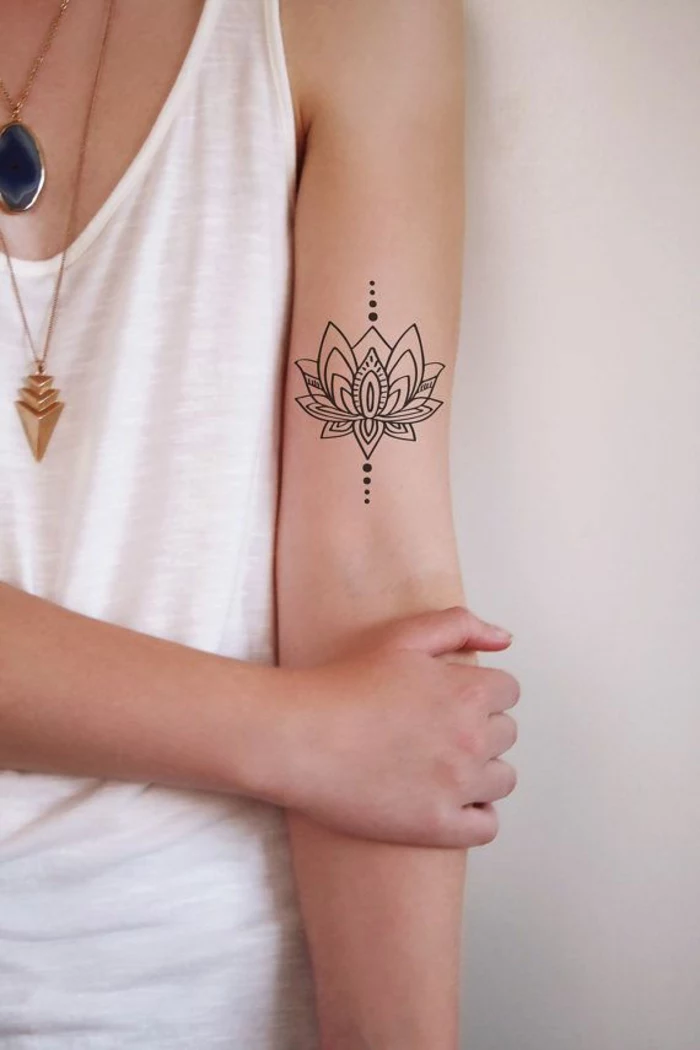
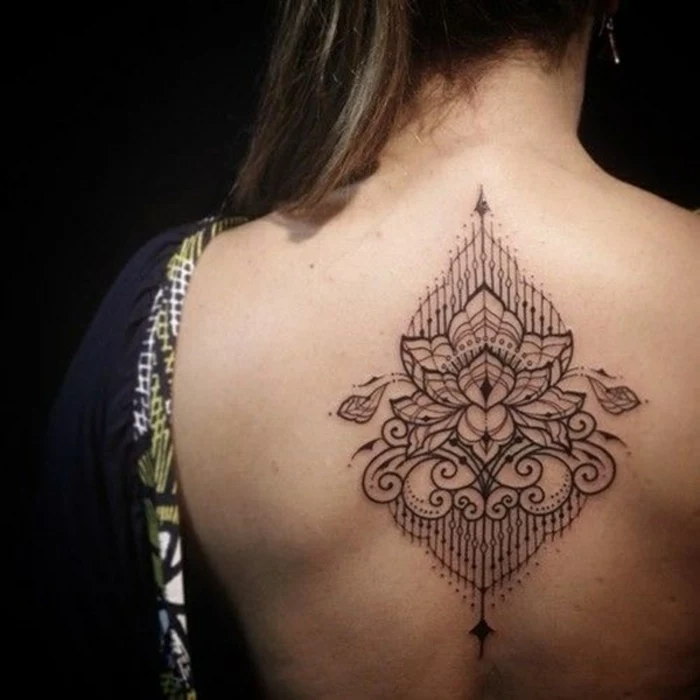
- A feeling of renewed confidence in your own skin.
- A permanent connection to a memory, person, or moment in time.
- A daily reminder of nature’s resilience and beauty.
This is the power of a floral tattoo. It’s a deeply personal mark that intertwines art, nature, and your own story.
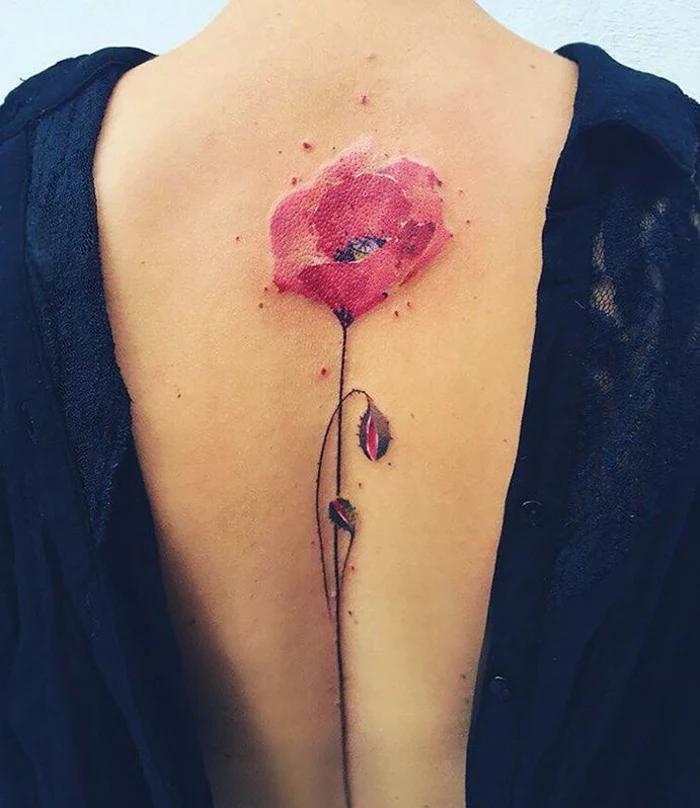
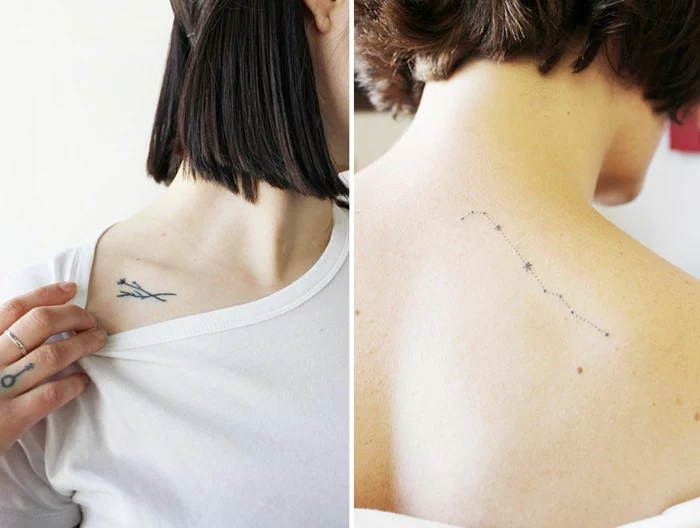
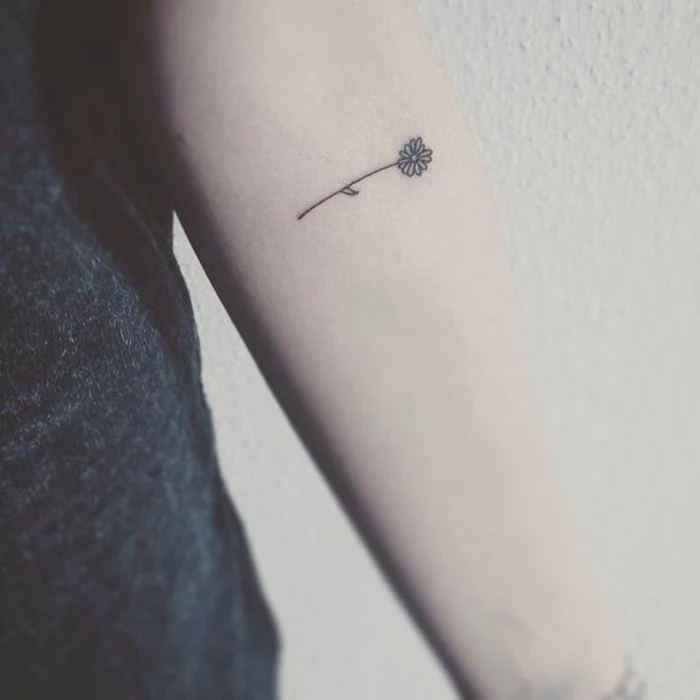
Your artist will give you specific instructions, but here are some go-to products loved by the community for healing:
- First 2-3 Days: Aquaphor Healing Ointment (a very thin layer).
- After a few days: Switch to an unscented, gentle lotion like Lubriderm, Aveeno, or Cetaphil.
- Specialty Option: Tattoo-specific balms like Tattoo Goo or Redemption Tattoo Care are formulated to promote healing without clogging pores.
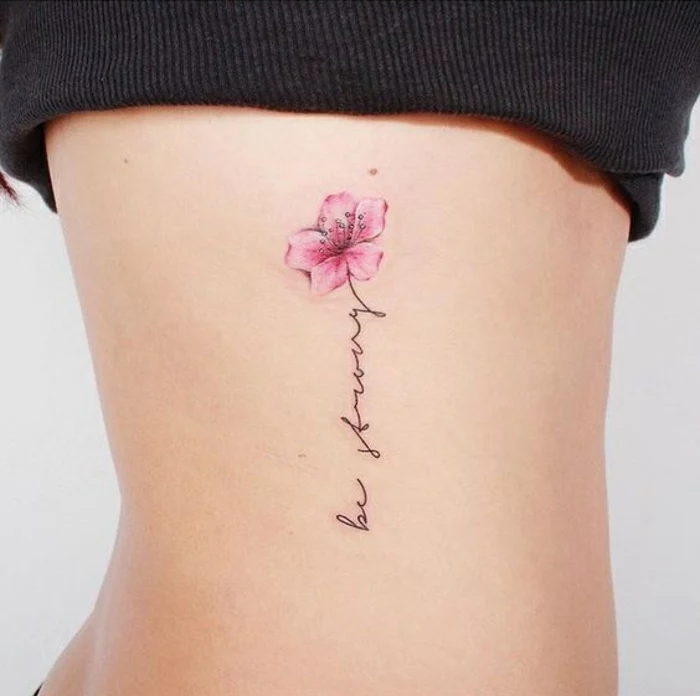
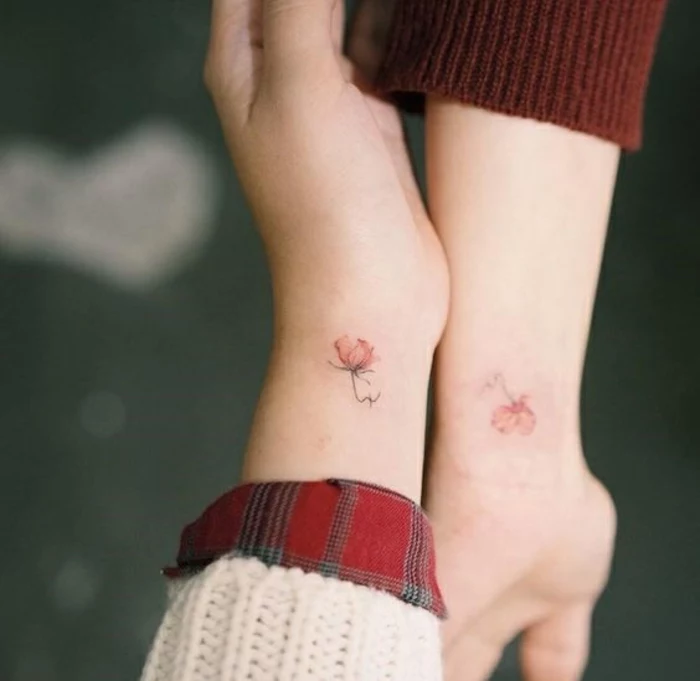
Inkbox: A semi-permanent option that lasts 1-2 weeks. It’s a fantastic way to test-drive a placement or design concept before committing. The ink develops in your epidermis, looking more realistic than a simple temporary tattoo.
Permanent Ink: A lifetime commitment. The ink is placed in the dermis, creating a piece of art that becomes part of you. The experience, the permanence, and the artistry are all part of its appeal.
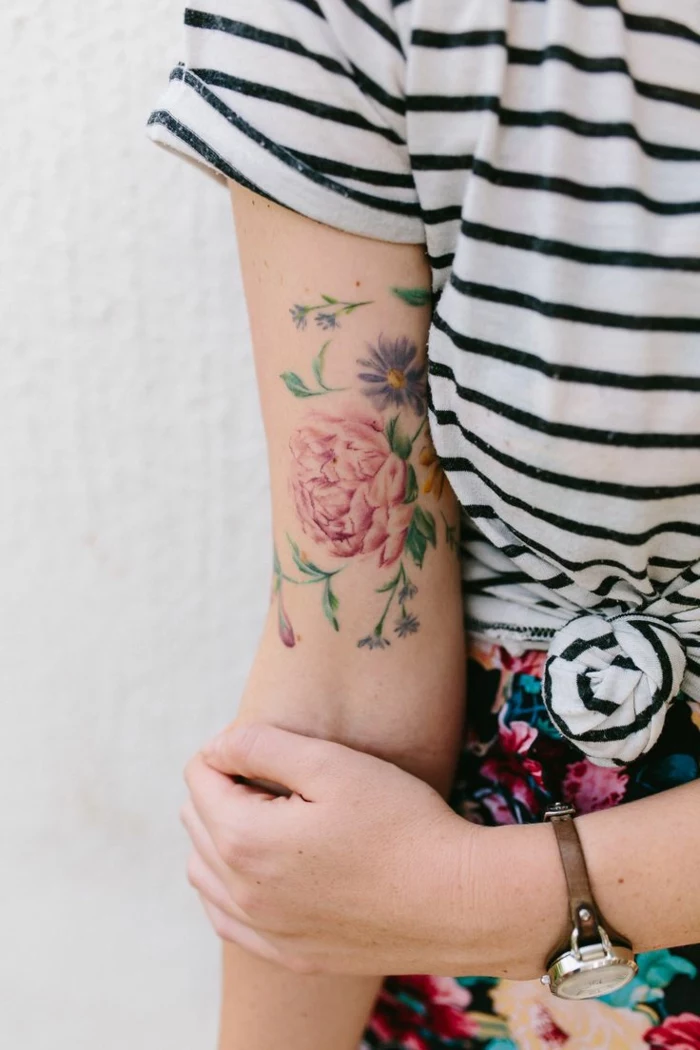
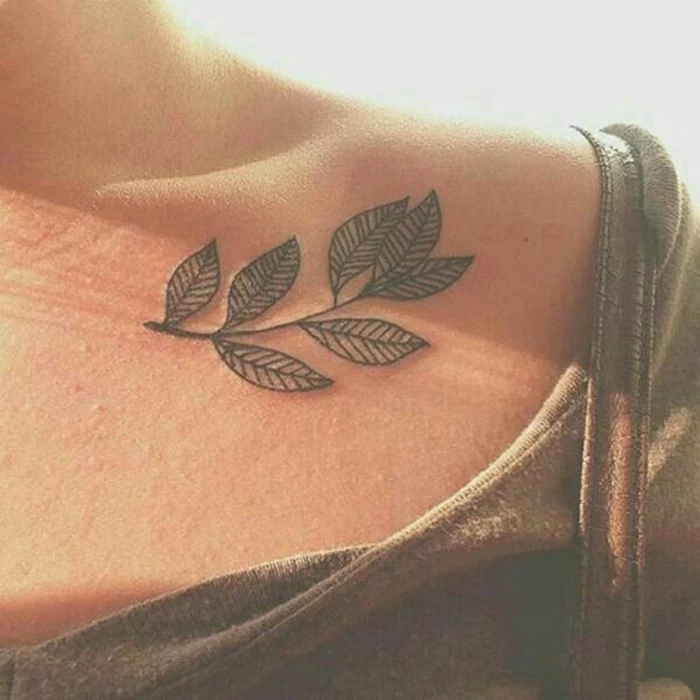
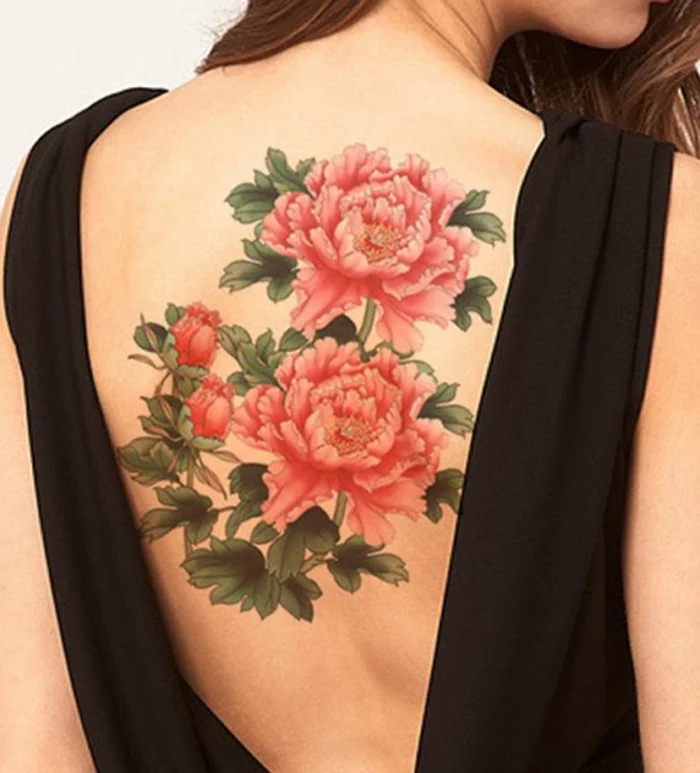
A flower’s color is never just one flat hue; it’s a complex blend of tones.
This is especially important when choosing colors for your skin. An artist might add hints of blue or purple to a red rose on darker skin to make it pop, or use warmer undertones for a lily on pale skin to prevent it from looking washed out. This color theory knowledge is a hallmark of a skilled tattooist.
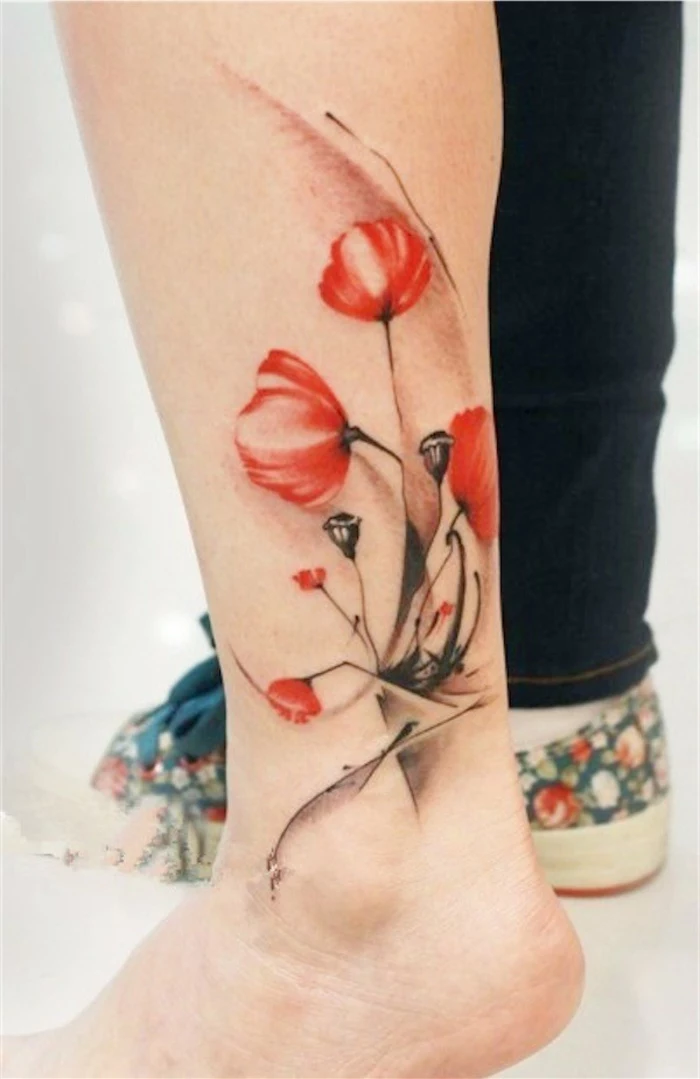
Your floral tattoo will age with you, its lines softening and colors mellowing just as you do. It won’t stay exactly as it was the day you got it, and that’s part of its beauty. It becomes a living part of your history, a faded photograph of a moment, and a testament to your own growth and change.

